#looked at photos of 1970s punks to come up with the clothes
Explore tagged Tumblr posts
Text

once again attempting a capital crime (drawing a property thats not an anime). heeeres gerry
#the magnus archives#gerard keay#tma#looked at photos of 1970s punks to come up with the clothes#i wanted it to look like hes making a fashion statement but like. not a conventional one#guy who gets clothes out of the trash by choice vibes#also the jean jacket is excellent extra padding for when some fucker tries to stab you
62 notes
·
View notes
Text
Part I
Second Half of my OC’s Information (the photo limit screwed me over)
The 1930s through the 1970s in Taika’s past is still a work in progress as well as the art soooo...probably a part three in the future?
Taika and Raspberry move to California the fall of 1986, although Raspberry finds a more permenant residence in Los Angeles while Taika finds herself on a more wandering path.
In the February of 1987 Taika wandered upon the town of Santa Carla, a town given credit for being home to those who wanted to disappear.


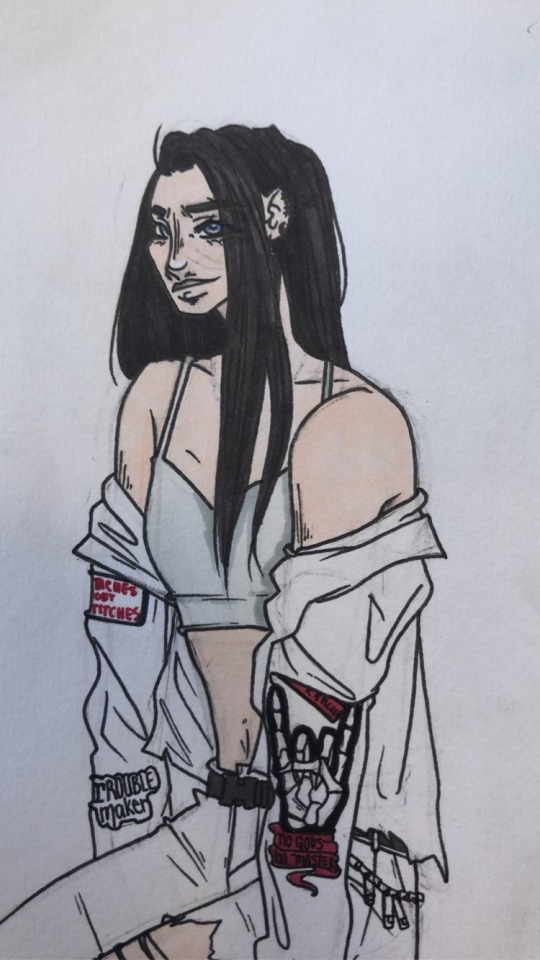
[side note: the jacket and jeans would be colored if only my damn markers hadn’t died]
Taika, a delinquent at heart as always, fit in like a puzzle piece. The punk-graffiti day life appealed to her like any adventure, and the smell of vampires lured her further into the town. She “cleared” a house (the act of killing the owners of a house and taking it for herself) as well as the garage. Taika acquired a 1987 Yamaha Virago via a rich douchebag she easily stole from and offed.
When the nightlife glowed at the boardwalk, it was apparent to the Santa Carla vampires that something was off, although they could not place it.
Taika did not make contact with the vampires for a while, seeming to distance herself just enough to make them curious about the uneasiness on the boardwalk since her arrival. Every now and then a body would turn up, a person snatched into an alleyway and partially eaten. It wasn’t until David met eyes with Taika across the boardwalk that it was clear to the Santa Carla vampires that there was another predator on their territory.
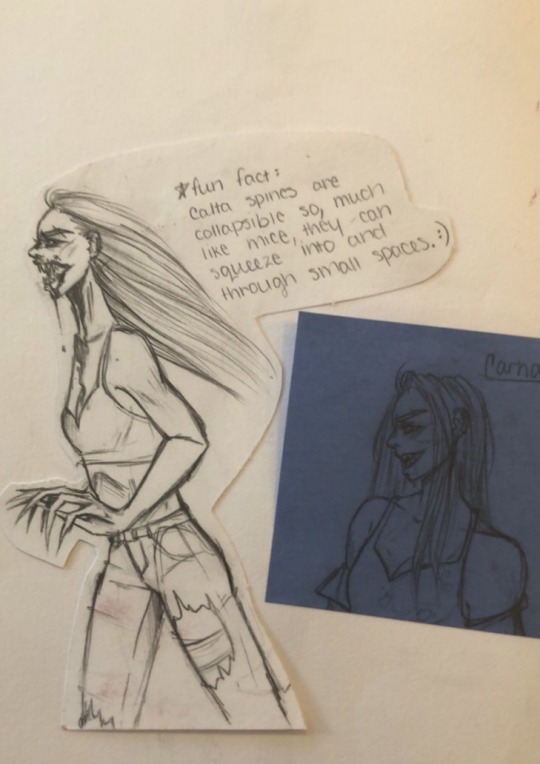
Taika’s aggressiveness and competitiveness are what pull the boys in first, that along with her scent, so much more intoxicating than any other human. A sort of playful rivalry grows between the calta and the vampires—who could last longer making trouble on the boardwalk without getting kicked off by Big Ed, who could score the biggest bonfire of surf nazis, and so on.
In the end it was Marko and Paul who put an end to the rivalry. Dwayne hadn’t thought he’d be able to really approach Taika and David was too prideful to do so. So the chaotic blonde duo took it upon themselves to invite her back to their cave as an act of trust as well as cease fire. David, no matter his pride, was quick to share about the fallen hotel made theirs. She was quick to catch on to the fact that they had been vampires much longer than they appeared. Dwayne brought it to her attention that she clearly knew what they were while they handn’t a single idea what she was.
With that question being asked, she explains what she is, and from there, their trusting relationship grows. The first time they hunt together is remotely terrifying to the vampires, considering she is a monster made for hunting them as well as other supernatural creatures.
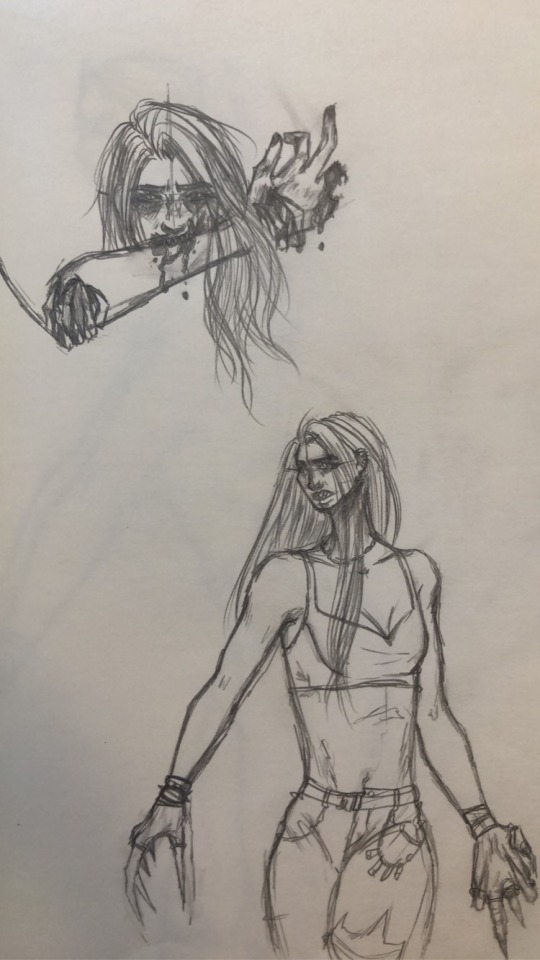
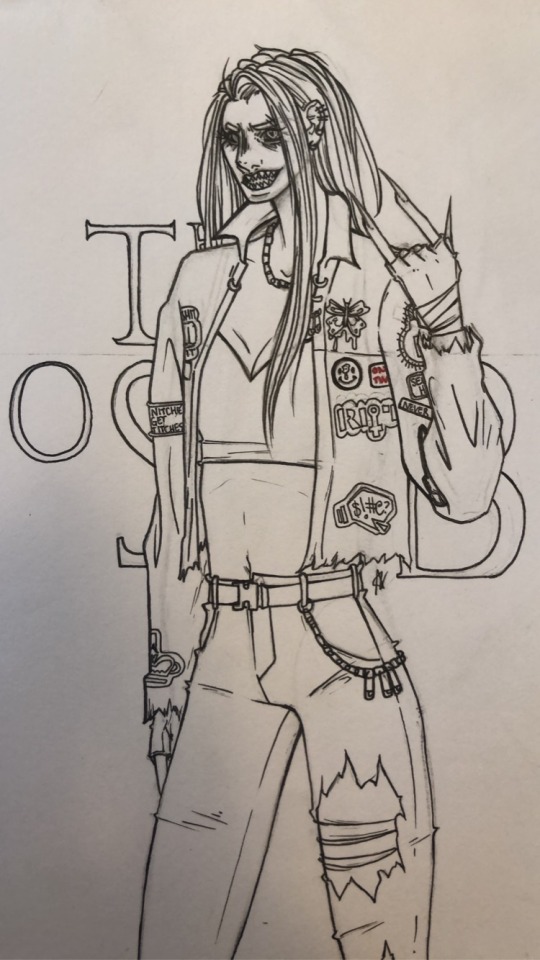
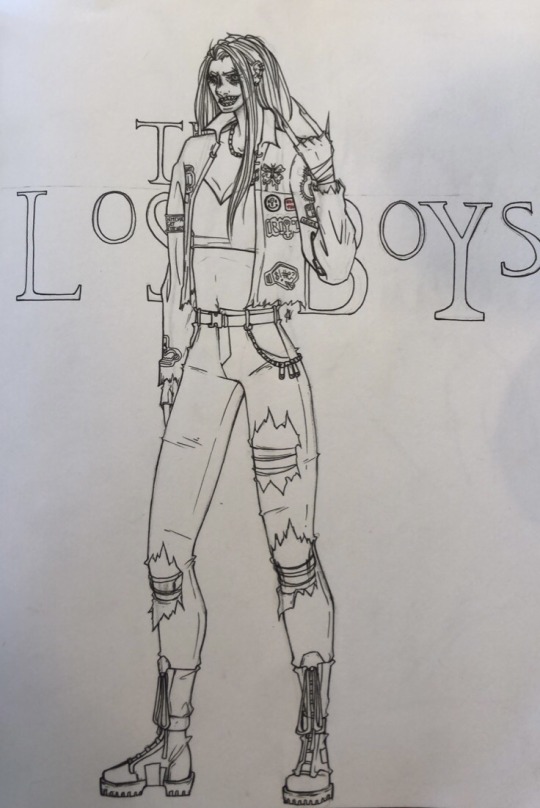
The relationship between the boys and Taika blooms into something deeper, though it isn’t apparent to any of them at all at first. It was just small things they realized they loved about her, and her them. They fall in love with her odd little quirks, like how she always has change on her because it’s “shiny and distracting”, or how she’ll braid tiny braids into her hair and sometimes to boys’ hair, or how she makes beautifully delicate carvings out of the bones of their victims, or buys(steals) stuff for the cave while they all sleep, or organizes whatever she can anytime she comes the to cave, and really really likes coconut shrimp.
She steals the boy’s clothing whenever she leaves the cave during the day after a night of events, not that any of them complain. Marko’s crop tops are always her go to, while she wears Paul’s jewelry out and sometimes jeans that Dwayne doesn’t wear anymore. Sometimes Taika and David switch earrings, only because David is hesitant to give her any of his current clothing,. When he finds that he is more possesive of her than he’d openly admit, he gives her extra shirts of his to keep. Taika loves how the vampires smells mask her own; not only is it comforting, but it protects her from any lurking sevren(a post for another time).
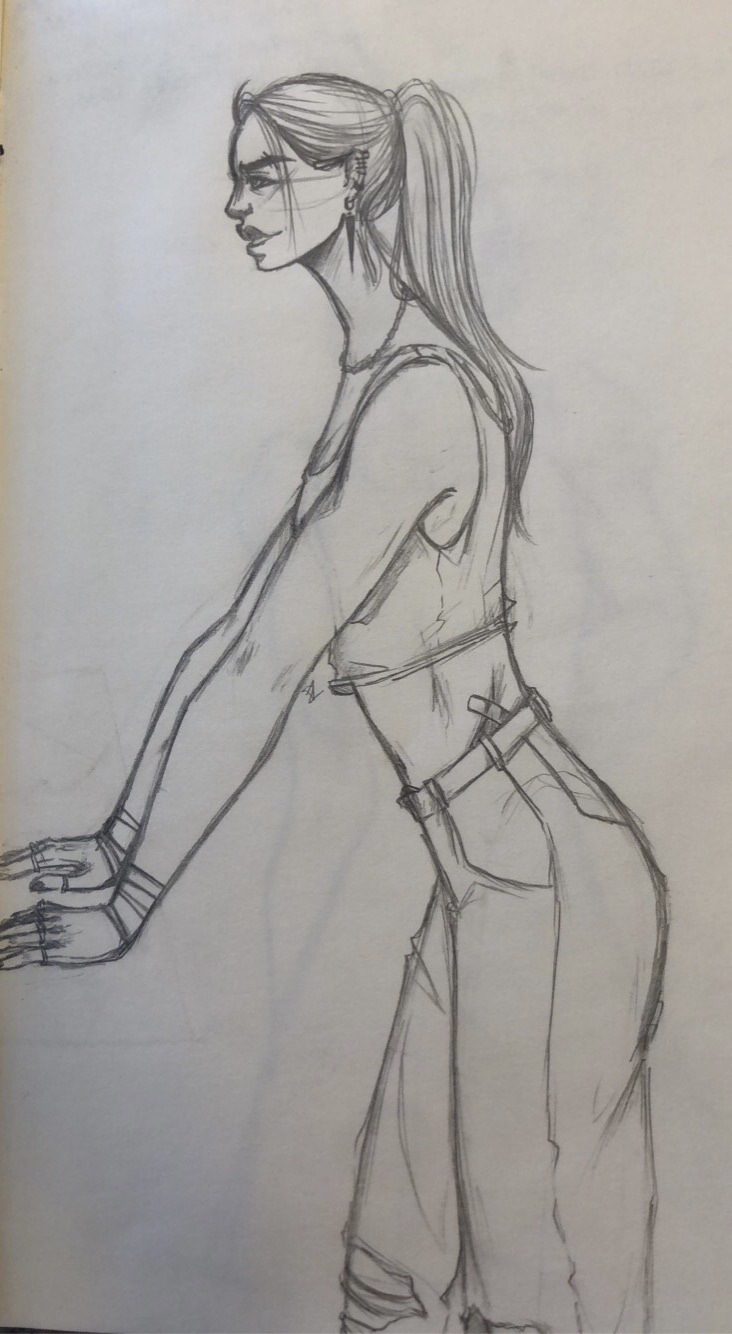
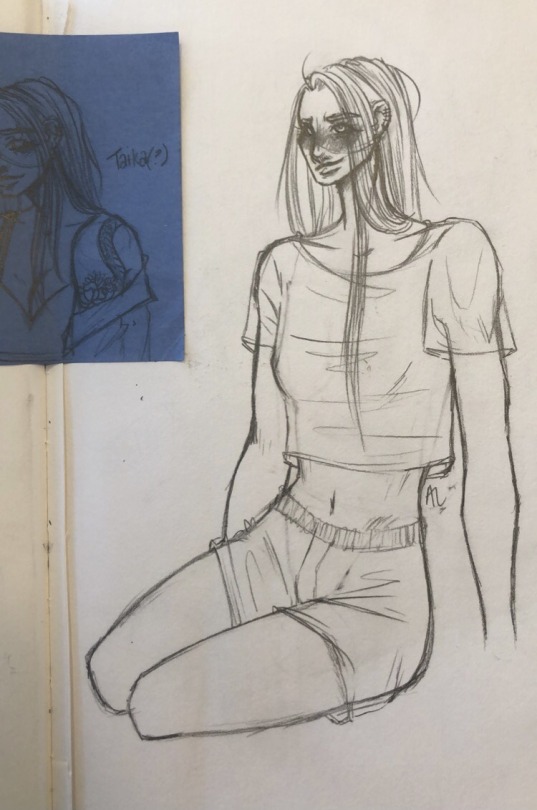
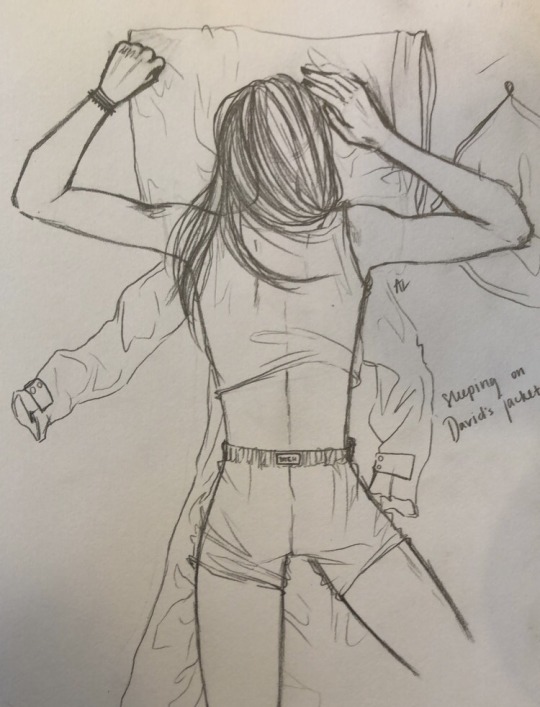
Taika only needing three hours of sleep allows her to have a day life of her own, one that tends to breed chaos. Sometimes she’ll go surfing, something she’s become quite adept at, and show up the surf nazis on their own territory. Taika is the only member of the “biker gang” that the surfers ever see during the day, so they let out a lot of their aggression on her because they’re truly too cowardly to face the boys and her head on. The biggest mistake the surfers ever made was the day they decided it’d be humorous to steal her bike in broad daylight. She’d parked her bike(albeit illegally) on the boardwalk when she got to the beach, and when she returned later that day her bike was gone. Needless to say the surfers had invoked the wrath of someothing stronger than them on supernatural levels.
The boys knew something was up the instant they walked into the caves main area to find Taika waiting patiently at the exit. The only tthing she said was she needed a ride, one David gave happily. When the vampires had parked their bikes and Taika had muttered some words of reassurance to fill in her silence, she made a beeline for the carousel, following the ocean-spray smell of the asshole who’d taken her bike. He was standing in line with an arm draped over a girl who couldn’t have looked more trashy, his friends jostling one another as the line moved along. The four vampires followed behind the taller predator, their curiosity evident as they formed a half-crescent around her when she stopped. Taika was quick to clamp her arm onto the girl under the surfer and yank her out of the way, sending her flying onto her butt. Taika was mad, like, really mad. She hooked her hand into the collar of the surfers shirt, ignoring his protest when she yanked him to her.
“Where is it,” she hissed, putting forth minimal effort to keep herself from biting his face off in public. Marko watched in excitement, his thumb between his teeth as his eyes found the surfer’s. This guy was screwed. He raised his hands in surrender and feigned innocence, “Hey, I don’t know what your deal is lady, but I don’t know nothin about anything.”
His friends snickered behind Taika, clearly enjoying how angry they had made her. She narrowed her wild purple eyes, running her tongue over her teeth.
“Where’s my goddamn bike,” she demanded, her voice like ice down his spine. The vampires watched on, looking about occasionally to make sure Big Ed wouldn’t poke his nose where it didn’t belong. His friends burst into laughter again, shoving one another giddily. Taika had half the mind to throw the surfer in her hands at them like a bowling ball at pin, but she repressed her urges.
“You can make this easy or you can make it hard. Give my my bike and I won’t have to kill you.” He pressed his hands to the sides of his face and made a noise imitating a ghost. She stilled, silently in thought for a moment before she scoffed and let go of his shirt.
“Fine. I’ll find it myself. Boys,” she turned sharply on her heel and marched towards her vampires, hooking her hand into Dwayne’s in a way that was supposed to be gentle, but she was too mad. Paul slipped his hand into her back pocket and matched her pace.
“Yeah, run to your queers.”
The boys would swear on their lives that they’d never seen her spin around and tackle someone as fast as she tackled that surfer. He was in the ground in seconds, and Taika was planting hit after hit, taking the few blows he managed to land on her ribs like they were nothing. The surfers friends sprang into action, attacking the boys as well as trying to pry Taika from the much bigger surfer. The surfer’s face was bleeding all over, and he was fighting to stay awake. Taika wanted blood. Her bike’s absence was a small inconvenience that ensured a meal later that night, but the insult to her boys was a direct blow at her. They could trash talk her straight to her face, insult her, whatever made them feel powerful, but no one, no one, says anything about her boys. At last, she was whacked across the face by the baton belonging to Big Ed. The blow stunned her if anything, although she fell to the side and off of the offending surfer. Paul and Marko were quick to her side, helping her to her feet while also readying to catch her if she tried lunge out at the bleeding prick on the ground. “Off the boardwalk. All of you! Now!”
David was beaming with pride as Taika walked to him and Dwayne, wiping the surfers’ blood from her lip. The surfers backed from the bikers as they walked forwards, parting away from them to avoid Taika who walked in front, acting as an active threat to anyone who dared to even think about opposing them. When the five were clear of the crowd, Paul looped his arms around Taika and pulled her in for a smacking kiss. “That was awesome babe. Like, so fucking awesome.”
She burst into laughter, dropping her head onto his chest.
“Hell yeah it was,” added Marko, yanking her to him and spinning her like they were dancing. “I’m like two-hundred percent sure that guy pissed himself!”
Marko and Paul exchanged a highly energetic high-five, feeling the energy of the fight reigniting itself. Dwayne silently pulled her into him and kissed her forehead.
“Good to know you care, kitten,”at David’s words she beamed. Dwayne released her, and she bounced towards David, latching onto the lapels of his jacket. “I hope you know that I would do anything for you,” her sultry accent sent a delighted chill down his back. “All of you,” she sang, letting go of David’s jacket and spinning into Paul and Marko’s arms giggling like a school girl. From within the blond vampire sandwich, she raised her hand in the air to make a point. “Now, let’s go find my bike!”
The car belonging to the surfer who’d stolen Taika’s bike was found strung up in a junkyard the next day. The sight had been stupendous apparently, and ended up on the news. The owner of the car and his friends had a been absolutely delicious. After he’d returned Taika’s bike of course.
27 notes
·
View notes
Text
Okay, okay, hear me out:
Formally Goth Cordelia from Falsettos
Let me explain:
She had a pretty fucked up childhood and expressed the pain through partaking in a goth lifestyle
She and Charlotte met at college and Charlotte saw her and was thought she was scary
She found out Cordelia is in fact a total ray of sunshine when Cordelia started to compliment her all the time and help her with small things
Both of them started to crush hard
They saw each other at a gay bar later and were like, 'what are you doing here?' ;)
They started dating the next week
So you see a long haired girl in a skirt and button up in a blazer walking with another girl with mascara running down her face with black lips and punk attire with a half shaven head that has a streak of some bright color, holding hands and giggling
When Charlotte's really stressed, almost as if Cordelia has a radar or something, Delia barges in rants about the newest record or patch she got with the cutest smile and Charlotte just melts
Cordelia has verrrry low self esteem and she panics about Charlotte leaving her because she is just so perfect in her eyes and feels as if she doesn't deserve to be treated so well
Charlotte just hugs her and tells her how much she matters to her and how much healthier she has made her mental health too
After years of dating and working through stuff, Cordelia starts to dress in more bright and 'normal' clothes
One day, Char and Delia are watching Jason for Marvin and Whizzer, they decide that going through old stuff would entertain him
As Cordelia and Charlotte fawn over each others baby photos, Jason pulls out a random box and looks through it, only to find Cordelia's old clothes, CDs etc.
Cordelia starts to get bashful and Chatlotte pulls out some old photos of them in college to show him
Marvin comes to pick Jason up, only to see him with makeup caked on, looking pale with black lips and eyeliner and shit with an oversized t-shirt of some obsecure band over some baggy ripped patch pants
The Lesbians look as if they were caught with a dead body as Whizzer laughs his ass off
I know punk fashion didn't start until the 1970s but I didn't realize that until I finished this but ~imagine~
9 notes
·
View notes
Text
BLOGTOBER 10/7/2020
I missed THE GOLDEN GLOVE at Fantastic Fest last year. It was one of my only regrets of the whole experience, but it was basically mandatory since the available screenings were opposite the much-hyped PARASITE. As annoying as that sounds, it was actually a major compliment, since what could possibly serve as a consolation prize for the most hotly anticipated movie of the year? Needless to say, I heard great things, but I could never have imagined what it was actually like. I'm still wrapping my mind around it.
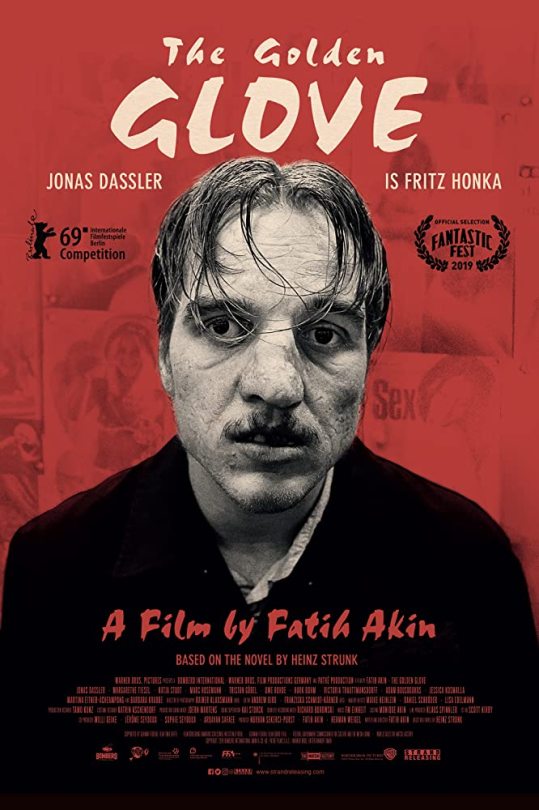
Between 1970 and 1975, an exceptionally depraved serial killer named Fritz Honka murdered at least four prostitutes in Hamburg's red light district. Today, we tend to think of the archetypal serial killer in terms of ironic contradictions: The public is attracted by Ted Bundy's dashing looks and suave manner, and John Wayne Gayce's dual careers as politician and party clown. Lacking anything so remarkable, we associate psychopathy with Norman Bates' boy-next-door charm, and repeat "It's always the quiet ones" with a smirk whenever a new Jeffrey Dahmer or Dennis Nilsen is exposed to the public. The popular conception of a bloodthirsty maniac is not the fairytale monster of yore, but a wolf in sheep's clothing, whose hygienic appearance and lifestyle belie his twisted desires. In our post-everything world, the ironic surprise has become the rule. In this light, THE GOLDEN GLOVE represents a refreshing return to naked truth.
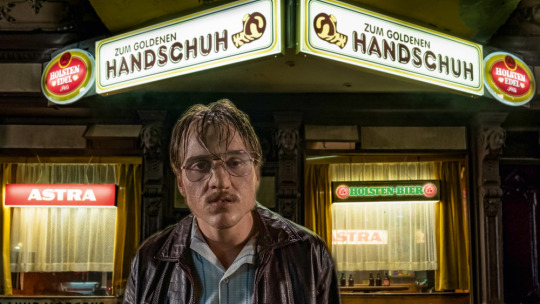
To say that writer-director Fatih Akin's version of the Fritz Honka story is shocking, repulsive, and utterly degenerated would be a gross understatement. We first meet the killer frantically trying to dispose of a corpse in his filthy flat, wallpapered with porno pinups, strewn with broken toys, and virtually projecting smell lines off of the screen. One's sense of embodiment is oppressive, even claustrophobic, as the petite Honka tries and fails to collapse the full dead weight of a human corpse into a garbage bag, before giving up and dismembering it, with nearly equal difficulty. The scene is appalling, utterly debased, and yet nothing is as shocking as the killer's visage. When he finally turns to look into the camera, it's hard to believe he's even human: the rolling glass eye, the smashed and inflated nose, the tombstone teeth and cratered skin, are almost too extreme to bear. Actually, suffering from a touch of facial blindness, I had to stare intently at Honka's face for nearly half the movie before I could fully convince myself that I was, in fact, looking at an elaborate prosthetic operation used to transform 23 year old boy band candidate Jonas Dassler into the disfigured 35 year old serial murderer.

Though West Germany remained on a steady economic upturn beginning in the 1950s and throughout the 1970s, you wouldn't know it from THE GOLDEN GLOVE. If Honka's outsides match his insides, they are further matched by his stomping grounds in the Reeperbahn, a dirty, violent, booze-soaked repository for the dregs of humanity. Though its denizens may come from different walks of life, one thing is certain: Whoever winds up there, belongs there. Honka was the child of a communist and grew up in a concentration camp, yet he swills vodka side by side with an ex-SS officer, among other societal rejects, in a crumbling dive called The Golden Glove. The scene is an excellent source of hopeless prostitutes at the end of their career, who are Honka's prime victims, as he is too frightful-looking to ensnare an attractive young girl. These pitiful women all display a peculiarly hypnotic willingness to go along with Honka, no matter how sadistic he becomes; this seems to have less to do with money, which rarely comes up, and more to do with their shared awareness that for them, and for Honka too, it's been all over, for a long time.

Not to reduce someone’s performance to their physical appearance, but ???
To call Dassler's portrayal of Honka "sympathetic" would be a bridge too far, but it is undeniably compelling. He supports the startling impact of his facial prostheses with a performance of rare intensity, a full-body transformation into a person in so much pain that a normal life will never become an option. His physical vocabulary reminded me of the stage version of The Elephant Man, in which the lead actor wears no makeup, but conveys John Merrick's deformities using his body alone. Although there is an abundance of makeup in THE GOLDEN GLOVE, Dassler's silhouette and agonized movements would be recognizable from a mile away. In spite of his near-constant screaming rage, the actor manages to craft a rich and convincing persona. During a chapter in which Honka experiments with sobriety, we find a stunning image of him hunched in the corner of his ordinarily chaotic flat, now deathly still, his eyes gazing at nothing as cigarette smoke seeps from his pores, having no idea what to do with himself when he isn't in a rolling alcoholic rampage. The moment is brief but haunting in its contrast to the rest of the film, having everything to do with Dassler's quietly vibrating anxiety.
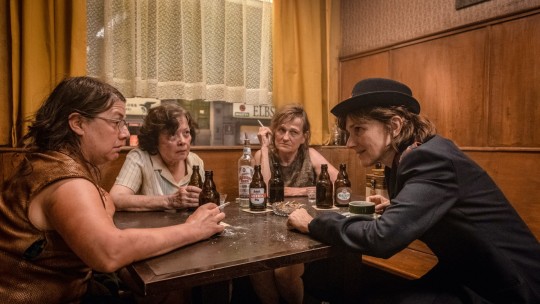
Performances are roundly excellent here, not that least of which are from Honka's victims. The cast of middle-aged actresses looking their most disastrous is hugely responsible for the film's impact. These are the kinds of performances people call "brave", which is a euphemism for making audiences uncomfortable with an uncompromising presentation of one's own self, unvarnished by any masturbatory solicitation. Among these women is Margarete Tiesel, herself no stranger to difficult cinema: She was the star of 2012's PARADISE: LOVE, a harrowing drama about a woman who copes with her midlife crisis by pursuing sex tourism in Kenya. Her brilliant, instinctive performance as one of Honka's only survivors--though she nearly meets a fate worse than death--makes her the leading lady of a movie that was never meant to have one.

So, what does all this unpleasantness add up to, you might be asking? It's hard to say. THE GOLDEN GLOVE is a film of enormous power, but it can be difficult to explain what the point of it is, in a world where most people feel that the purpose of art is to produce some form of pleasure. This is the challenge faced by difficult movies throughout history, like THE GOLDEN GLOVE's obvious ancestors, HENRY: PORTRAIT OF A SERIAL KILLER, MANIAC and THE TEXAS CHAIN SAW MASSACRE. Describing unremitting cruelty with relentless realism is not considered a worthy endeavor by many, even if there is real artistry in your execution; some people will even mistake you for advocating and enjoying violence and despair, as we live in a world where huge amount of movie and TV production is devoted to aspirational subjects. (The fact that people won't turn away from the Marvel Cinematic Universe movies, no matter how monotonous and condescending they become, should tell you something) How do you justify to such people, that you want to make or see work that portrays ugliness and evil with as much commitment as other movies seek to portray love, beauty, and family values? Why isn't it enough to say that these things exist, and their existence alone makes them worth contemplation?

A rare, perhaps exclusive “beautiful image” in THE GOLDEN GLOVE, from Fritz Honka’s absurd fantasies.
You may detect that I have attempted to have this frustrating conversation with many people, strangers, enemies, and friends I love and respect. I find that for some, it is simply too hard to divorce themselves from the pleasure principle. I don't say this to demean them; some hold the philosophy that art be reserved for beauty, and others have a more literary feeling that it's ok to show characters in grim circumstances, as long as the ultimate goal is to uplift the human spirit. Even I draw the line somewhere; I appreciate the punk rebellion of Troma movies as a cultural force, but I do not enjoy watching them, because I dislike what I perceive as contempt for the audience and the aestheticization of laziness--making something shitty more or less on purpose. A step or three up from that, you land in Todd Solondz territory, where you find materially gorgeous movies whose explicit statement is that our collective reverence for a quality called "humanity" is based on nothing. I like some of those movies, and sometimes I even like them when I don't like them, because I'm entranced by Solondz's technical proficiency...and maybe, deep down, I'm not completely convinced about "humanity", either. However, I don't fight very hard in arguments about him; I understand the objections. Still, I've been surprised by peers who I think of as bright and tasteful, who absolutely hated movies I thought were unassailable, like OLDBOY and WE NEED TO TALK ABOUT KEVIN. In both cases, the ultimate objection was that they accuse humans of being pretentious and self-deceptive, aspiring to heroism or bemoaning their victimhood while wallowing in their own cowardice and perversity. Ok, I get it...but, not really. Why isn't it ever wholly acceptable to discuss, honestly, what we do not like about ourselves?
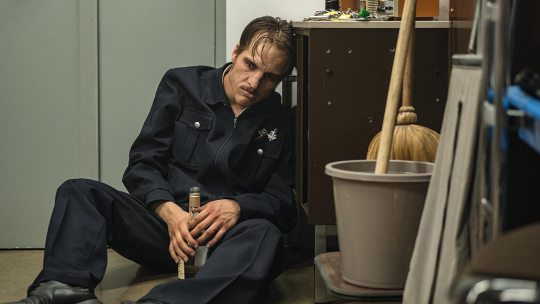
The beguiling thing about THE GOLDEN GLOVE is that, although it is instantly horrifying, is it also an impeccable production. The director can't help showing you crime scene photos during the ending credits, and I can't really blame him, when his crew worked so hard to bring us a vision of Fritz Honka's world that approaches virtual reality. But it isn't just slavishly realistic; it is vivid, immersive, an experience of total sensory overload. Not a square inch of this movie has been left to chance, and the product of all this graceful control is totally spellbinding. I started to think to myself that, when you've achieved this level of artifice, what really differentiates a movie like THE GOLDEN GLOVE from something like THE RED SHOES? I mean, aside from their obvious narrative differences. Both films plunge the viewer into a world that is complete beyond imagination, crafted with a rigor and sincerity that is rarely paralleled. And, I will dare to say, both films penetrate to the depths of the human soul. What Fatih Akin finds there is not the same as what Powell and Pressburger found, of course, but I don't think that makes it any less real. Akin's film is adapted from a novel by Heinz Strunk, and apparently, some critics have accused Akin of leaving behind the depth and nuance of the book, to focus instead on all that is gruesome about it. This may be true, on some level; I wouldn't know. For now, I can only insist that on watching THE GOLDEN GLOVE, for all its grotesquerie, I still got the message.
#blogtober#2020#the golden glove#fatih akın#heinz stronk#jonas dassler#margarete tiesel#difficult cinema#horror#slasher#serial killer#period piece#adaptation#historical#biopic#fritz honka#i may have been watching a lot of powell and pressburger movies recently#sorry...
24 notes
·
View notes
Text
Lecture 2: What influences fashion trends?
In this lecture, we discussed what a trend is, how trends start and the power of trends and trend setters.
Starting off, we asked ‘Who influences trends?’ – a very broad question. Taking inspiration from the presentation and my own considerations – I came to the conclusion that trend influencing comes from a variety of sources, including: Stylists, Magazines (i.e Vogue, i-D), Street & Instagram celebrities (such as gullyguyleo and Molly-Mae Hague), Retailers, Celebrities (such as Kanye West and Kim Kardashian), Models (both on and off the catwalk) and subcultures and style tribes.
These influencers have different methods when influencing trends. Gwyneth Holland and Rae Jones discuss the idea of trickle-down theory – the idea that designers, magazines, stylists and retailers dictate trends and feed them to the customer – in their book ‘Fashion Trend Forecasting’. As seen in the list above, a large amount of the influencers use trickle-down theory – coming from high status within and outside the fashion world.
However, due to the increase of social media – in addition to the long standing model of style tribes and peer influence – there is definitely a good amount of bubble-up theory, in which (as explained in ‘Fashion Trend Forecasting’) the consumers’ fashion tastes influence the top designers and influencers.
When looking at celebrity influence, it is clear that not all celebrities are deemed socially stylish. For example, Boris Johnson would not be looked up to for fashion advice. A celebrity such as Kanye West, however, is famous for his impact on trends and what people wear. As soon as he wears a brand, people follow – which actually a huge turning point for the streetwear brand Palace’. Due to our desire to be like celebrities; our desire to be cool and both socially and for the other sex, celebrities have a huge power on trend setting.
This is also clear when browsing lower cost brands. Celebrities or hyped designer items will have cheap imitations made sometimes within a day, so those that can’t afford the high end price tag can still look as fashionable as their celebrity icons.
A task we were given was to research a trend with 3 questions to answer:

For my research, I picked the punk trend. In my opinion, punk never left our shelves. It may have become less popular but studs, patches, rips, and paint splashes have not disappeared from our stores – especially over the recent decade. Stores and designers from Urban Outfitters to Philipp Plein and DSquared all have classic punk aspects visible.
As evident in the answer above, I do think punk fashion is still visible in the youth today. Patches, studs, ripped jeans and paint splatters are all prevalent in today’s youth style. Maybe, without them even being aware of the origins of the style.
As mentioned, it would seem as if the punk evolution is more of a devolution. Aspects of the punk style have been taken and added to otherwise relatively mainstream clothing. Of course, truly punk clothing can still be found. However, it is my belief that the punk theme has transferred more into the streetwear bubble. Brands such as ‘Pleasures’ into a more of a streetwear ethos (with printed shirts, hoodies, trackies, etc).
We then shifted our attention to other forms of trend influencers and how they originate.
The Guardian (2018) stated that what is considered cool in fashion depends on your interests, whether it be jazz, punk, skateboarding, etc. I agree with this statement. I believe that within different interests, there are clear go-to staples within their fashion atmosphere.
This idea is manifested in what is called a subculture. A subculture is a social group that bases itself around a certain ideal, with its attitudes thus affecting the group’s fashion. They define themselves outside of the mainstream, not caring about what is deemed fashionable in society and making their own definition of what is fashionable to THEM. This made them and their fashion exclusive, distinctive and different.
The first subculture is thought to be the Teddy Boys of 1950s London. They adopted Edwardian era garments, wearing tapered trousers, long jackets and waistcoats, due to an over-supply of tailored clothing. This subculture is considered to be the first generation to have its own style, desiring to dress up and stick out from the masses and the fashion sense of the generations above them.
In the present day, the effects and influence from this subculture is still felt. Close resemblance can be seen between photos of the Teddy Boys and Celine AW19 and Yves Saint Laurent AW 14/15.
A later example of a subculture is the hippie era of the 1970s. The subculture’s philosophies and ideals were that life is beautiful and must be lived freely, all must be accepted for who they are and love and positivity should be spread. This was manifested in their fashion through baggy, loose clothing, bright colours and patterns such as paisley and tie dye.
Style tribes can also influence fashion trends. Style tribes are groups of people united by a distinctive look. However, there is no core philosophy or ideology that inspires this look. This is clear when looking at ‘hype beasts’. Hype beasts wear anything as long as it is from a big or popular brand and is loud about it. Supreme and Palace’s logo tees are the first examples that spring to mind. The fashion is about showing off your money (by buying expensive clothes) and showing off that you are in the know as to what brands are cool. This clearly opposes subcultures’ structure to how fashion is evoked. Hippie fashion, for example, is fashionable because it is comfortable, freeing and colourful, which ties in with their philosophy that life should be enjoyed and you should embrace the freedom and beauty of nature.
One slide in the lecture that caught me most was one questioning if we had lost the subcultures and style tribes that informed fashion. In my opinion, due to social media, globalisation and an increase in the perceived pace of life – yes, fashion is beginning to lose long term trends and replace them with fads. I believe that fashion is heading towards an idea that for 3-6 months you wear these sets of hot items, and then move on or you are unfashionable. And due to the increase in instant communication and desirability of social status through social media, less people will be inclined to deviate from these fads and set up or join a subculture or style tribe due to their worry of loosing social status. In the era of the instant communication and social media, we are more scared than ever to deviate from the mainstream.
The lecture then went to discuss the idea that social media has an effect on the evolution of fashion trends. Those that are famous or in control of forms of influence (such as established websites) have power to deem certain looks desirable and undesirable, and the masses will listen. For example, Zoe Zeebo, who started as a YouTube personality (adding to the idea that ‘she is just like you or I’) has gained massive popularity and can now dictate through her videos or blogs what is good or bad, both within and outside of fashion. Similar personalities that gain attention on social media are guaranteed to have an influence on fashion. If a lifestyle vlogger puts a video of their guide to fashion for Autumn – even if it is their opinion of what they individually enjoy and not intended to be a guide – it will gain traction and spread influence. This idea of course is even more powerful and true if the source of the information is someone established within the fashion atmosphere as a whole.
Global issues can also influence fashion. It may be social reaction to wars, social injustice or – as is happening currently – environmentalism. Right now, there is huge social conversation about the environment, global warming, and concern over being harmful to the earth. This is shifting consumer taste to clothing that is environmentally friendly and ethical, which may be accomplished by using botanical and natural dyes as to not pollute, reusing offcuts of fabric, and producing clothing to be biodegradable.
1 note
·
View note
Text
Hope Idiotic | Part V
By David Himmel
Hope Idiotic is a serialized novel. Catch each new part every week on Monday and Thursday.
LOU HIT THE SAN FRANCISCO CITY LIMITS JUST AS NIGHT WAS COMING DOWN. He used the hostel book as promised to find a well-rated spot with a good view of the city. He’d never stayed in hostels before and was curious. He’d hoped to meet a few strangers he could make friends with for the night and explore the city with, but the place was pretty empty. It was too early in the summer for college students or Europeans to be backpacking their way through the country.
Lou was sent to a room with four bunk beds. Two bunks — top and bottom — were occupied with sleeping bags, clothes and shredded bags of potato chips. Lou claimed the top bunk closest to the door. He tossed his stuff onto the mattress and quickly returned to the front desk.
“Where’s the best place to go for a few drinks?” he asked the grimy grunge-brat wearing flannel and a Sonic Youth T-shirt. “Maybe a place with good live music.” He was directed to a place called, Shattered Glass. He was able to walk there from the hostel, which sat at the top of a hill and owned a perfect view of the Golden Gate Bridge. Like every other place he had encountered in California so far, this bar was mostly empty. On the small stage at the back end of the joint, a weathered man, who looked like he may have been part of the West Coast punk movement in the 1970s, played a banged-up acoustic guitar and sang cover songs of everything from Iggy Pop to Lisa Loeb. Miller Lites were six bucks a bottle, but hell, that was San Francisco.
Lou tried to engage the bartender in some friendly conversation about the town, where to go, what to do and where the hell everyone was that night. But the bartender, a bored, sad-looking man of about thirty-five, wanted nothing to do with it. And after six bottles of beer and an hour of the aged, never-was rockstar, Lou paid his thirty-six-dollar tab and took off.
He wandered the streets searching for a little action, but found nothing worth getting into. So, he headed back up the hill to the hostel, where he figured he’d tuck himself in and wake up early. Get a head start on the day. Grab breakfast. Visit the bridge then continue north into Oregon.
When he left the hostel, he remembered leaving his room’s door open just as he’d found it. When he returned, it was closed. He put his ear to the door to inspect any potential sounds. When he didn’t hear anything, he slowly turned the handle and opened the door. It was pitch black in the windowless room. He pulled out his cell phone as he closed the door behind him. He flipped the phone open to light the few steps to his bunk. He climbed up and carefully took his shoes and socks off, then slid into his sleeping bag. Lou had a near-perfect internal clock and rarely used an alarm. As he closed his eyes, he said in a whisper, “Wake up at seven a.m. Wake up in seven hours.”
Just as he began to fall asleep, he was startled by noises coming from within the room. He hadn’t scanned the place with the light of his phone before going to bed; he had just assumed he was alone. The noises were coming from one of the bunks that earlier he’d seen loaded with someone’s belongings. His cell phone was resting on his chest, and for a moment, he considered flipping it open and seeing who or what was in the room with him.
Now he was going to bear witness to alien robot sex and perhaps become a post-coitus sacrifice. Fuck Michelle. Fuck hostels. Fuck robots. Fuck San Francisco.
There were rustling sounds and what he thought were voices being muffled by blankets and pillows. He heard music being played. Not songs: more like ring tones from a cell phone or video game soundtracks from a handheld game system. The bunk squeaked in rhythm as it tapped the cement wall. He looked over and saw blue and green and red lights glowing, flickering intermittently from under blankets. It was like robots having sex.
Lou was scared. This sort of thing would never happen under the parking lot light of a hotel. Why did he make that promise to Michelle to stay in hostels? Why did he keep that promise? He had a perfectly workable system when on the road, and she fucked it all up with her law school arguments and girlfriend charm. Now he was going to bear witness to alien robot sex and perhaps become a post-coitus sacrifice. Fuck Michelle. Fuck hostels. Fuck robots. Fuck San Francisco.
He debated making an escape, but figured he couldn’t collect his stuff fast enough in the dark without disturbing the alien robots that would probably kill him. So he slouched down farther into his sleeping bag, pulled his pillow tightly over his head and the opening of the bag around the pillow so he was entirely encased and protected, like a caterpillar in a cocoon. He forced himself to think about anything else: Chicago; Michelle; his career in twenty years; Chuck; his house in Las Vegas; the family dog Max greeting him at his dad’s house; Crater Lake; the price of gas; his pending empty bank account; his résumé; where he would live… More and more, he was less afraid of the increasingly loud and strange sounds coming from the adjacent bunk, and starting to fear what was waiting for him outside of that dark hostel room.
Panic finally put him to sleep. And when his eyes popped open at 7 a.m., he was still stuffed down in his sleeping bag and drenched in sweat. Slowly, he peeked his head out of the bag, but couldn’t see a thing because even during the morning, the room allowed no light to come in. He didn’t hear anything, so he flipped his phone open and aimed it across the room. It didn’t illuminate much, but from what he could see, the coast was clear. He swung his legs over the edge of the bunk and hopped down. He reached the light switch and turned it on, ready for the alien robots to spring to life and attack him. But he was alone. No one, nothing, was in the room with him. The things he had seen on the bunks when he checked in were gone. Other than his own stuff and the beds, the room was bare.
He wondered if he had imagined the noises and lights. Was the anxiety of the move playing tricks with his brain? Was he going crazy, or were there really alien robots having sex a few feet from him last night? It didn’t matter. It was over. The day was anew.
He put on some fresh clothes, brushed his teeth in the communal bathroom, paid his bill and took off toward the Golden Gate Bridge. It was early and traffic was light. It was just Lou and a European couple on the pedestrian part of the bridge. He could tell they were European by the formfitting brightly colored jeans and vinyl windbreakers that looked like they were stolen off the set of a 1980s Wham! video. The air was cool and salty. There wasn’t much fog like expected, so he was able to grab a few good photos of the bridge and some grainy, but mostly decent, shots of the Alcatraz rock. The majesty of the Golden Gate Bridge was one thing. But what really grabbed his attention were the emergency telephone boxes secured to the bridge every couple of yards. They had signs above them that read:
CRISIS COUNSELING THERE IS HOPE MAKE THE CALL THE CONSEQUENCES OF JUMPING OFF THIS BRIDGE ARE FATAL AND TRAGIC.
He looked over the railing into the San Francisco Bay. He knew how it worked. A sad, troubled life. A moment of uncertainty — then certainty. A little leap. This was America’s hot spot for suicide aficionados. It was either the impact with the water or the greedy undertow of the bay that would kill a person. Lou wondered for a second what part would kill him. If it wasn’t the fall, could he survive? He was a strong swimmer. It was a rhetorical question; actually killing himself was not on his mind.
Still, he wondered about those emergency phones and about the operators on the other end of them. How many lives were saved by the telephone? How many operators heard last words? He considered picking one up and telling the operator that he would kill himself unless someone in Chicago would have a job waiting for him when he arrived in two weeks. But then he figured that probably wouldn’t work. No one would want to hire a demanding suicidal maniac.
He used his cell phone to call Michelle from the bridge. He hated the idea of bothering her at work, but she assured him that a phone call from him was never a bother but a blessing.
“Michelle Kaminski’s office,” her secretary said.
“May I please speak with Ms. Kaminski,” Lou asked.
“Ms. Kaminski is in a meeting at the moment. May I take a message for her?”
“Thank you. Please tell her that Lou Bergman called. She has my number.”
“Will she know what this is in reference to?”
“Yes, ma’am.”
“I’ll have her return your call at her earliest convenience, Mr. Bergman. Have a wonderful day.”
He meandered along the bridge for a few more minutes until Michelle called back. “You called?” She did not sound happy.
“Hi, baby. That was a quick meeting.”
“It was three hours long — just finished.”
“Brutal. Guess where I am?”
“I don’t know… Moon Lake or wherever.”
“Moon Lake? You mean, Crater Lake. No. I’m standing on the Golden Gate Bridge. God, Michelle, you should see it. It’s beautiful.”
“I’d love to be there with you. But I have a job to do. I’d love to be able to take two weeks off to do whatever I wanted and go wherever I wanted, but I have responsibilities. People depend on me. I have billable hour quotas I need to hit. But you go ahead and enjoy the view from the bridge, Lou.”
“Whoa. I’m sorry that upset you. You sound busy. I’ll let you go.”
“I am busy, Lou. I’m always busy. This is my job. I think you need to hurry home.”
“I know, baby. I’m on my way to you. Just 12 more days. It’s nothing.”
“I mean it. This road trip, I get it. I know you like driving all over with no direction, like its your last hurrah or something, but you need to consider me, Lou.”
“I have direction. I know exactly where I’m going.”
“That’s not what I’m talking about.”
“Then what are you talking about?”
“I’m talking about me slipping away. You’re losing me.”
“What?”
“I know you’re moving here to finally start your life, but mine has been happening, and you can’t expect me to just wait around for you to show up whenever you please. It’s not fair to me. I love you, Lou. And I want to spend the rest of my life with you. But I can’t promise you I’ll be here when you finally show up. I hope I’ll still be waiting for you, but I don’t know. I have to go. I’ll talk to you later.”
What the hell just happened? She’s raving like a madwoman, he thought. He’d been through this with her before, however. In moments of personal stress, Michelle had a tendency to overreact and lash out at anyone within striking distance. There was one week during her freshman year in high school when her best friend Jen was too busy to hang out with her. As retaliation, during a soccer practice warm-up exercise, Michelle kicked a ball has hard as she possibly could at Jen, hitting her square in the gut, knocking her on her feet and forcing the air right out of her lungs. Jen had a soccer-ball–sized bruise for several days and was benched for that weekend’s game because of the injury.
When Michelle told this story in her maid-of-honor speech at Jen’s wedding, she didn’t understand why no one laughed at it. “Because it’s just mean,” Lou told her. But Michelle disagreed and stood by her case that Jen had it coming and that it was a funny story. Besides, they were still friends after all, she argued.
Maybe Michelle was freaking out on him because she’d just emerged from a painful three-hour meeting. She was just stressed at work and jealous that he was out having fun. Envy. That’s what it was. He wasn’t losing her. She was just kicking the soccer ball in his gut.
✶
HE DROVE INTO TOWN AND FOUND A PLACE TO GRAB A BAGEL AND COFFEE, and read one of the scummy alternative papers in the wire basket by the door. As he was biting into the bagel, he received a text from Michelle:
I’m sorry I barked at u. But hurry. I won’t wait forevr. Stop wasting ur life.
“I really don’t have time for this right now, Lou,” Michelle said when he again called her. He couldn’t let a text like that go without further explanation. Clearly, she was not just lashing out. She was giving him an ultimatum: Stop having fun or she was leaving.
“You’re not being fair,” he told her.
“No. You’re not being fair to me or your career. You know what the right thing to do is. So do it.”
He drove a little farther north but pulled into a gas station just before leaving the San Francisco limits. While the car fueled up, he called Chuck.
“She’s right. What am I doing out here? I’m wasting all of this money that I don’t really have, when I could be in Chicago looking for a job. And now what? Now she’s going to break up with me when I get there? All broke and unemployed but with some photos of the town where Hemingway shot himself? What the fuck am I doing?”
Chuck was at the hospital in Indiana where his mother was recovering from her second heart surgery. “First of all, calm down. Just breathe,” he told Lou. “She’s not going to break up with you. You’ll find a job. Just relax.”
“I can’t! I’m telling you, I’ve got a bad feeling about all of this. I’m freaking out. I swear there were robots fucking in my room last night. I gotta get to Chicago. I gotta get my life going. I know! I’ll call a shipping company, have them pick up my car from this gas station. I’ll call Southwest and get a plane ticket, and I can be home by tonight.”
“You’re fucking crazy,” Chuck said. “Now, shut up and listen to me. You’ll end up spending more money on shipping and flying than you will driving. If it’ll keep you from going insane, cancel the adventure. You can try it again another time. I’ll do it with you. So calm down, drive back into the city and find I-80. It starts there. Just take that straight across into Chicago. You’ll be there in three days.”
✶
WHEN LOU PULLED UP TO MICHELLE’S HIGH-RISE on Lake Shore Drive, he was covered in a layer of highway dust, beef jerky crumbs and sweat. His breath reeked of Red Bull, dehydrated meat and a tired piece of chewing gum. His hair was oily, but he thought it looked pretty good for having spent the last seven days windblown in the driver’s seat of his Volkswagen. If only it could look that good after a shower.
As he looked at himself in the rearview mirror, he closed his eyes and sighed. He told himself out loud, “All right, asshole. Don’t fuck anything up.”
When Michelle answered the door of her pricey northside one-bedroom apartment and saw Lou standing there, her face exploded into a smile. She grabbed his hand and pulled him inside, where she kissed him long and perfectly. Then she drew all the blinds down on the large windows that presented a picturesque Chicago — the peaks of downtown buildings, Belmont Harbor and Lake Michigan’s expanse out east, and the garden rooftops of Wrigleyville to the west. Again, their mouths met, and they fell into a rabidly intense lovemaking session.
“Welcome home,” Michelle said once she caught her breath, both of their naked bodies sweaty and shaking with pleasure.
“I can get used to this,” he said.
Part I Part II Part III Part IV
#Hope Idiotic#Chicago Fiction#Las Vegas Fiction#Fiction#Novel#David Himmel Fiction#David Himmel Author#Bildungsroman#Dark Humor
1 note
·
View note
Photo
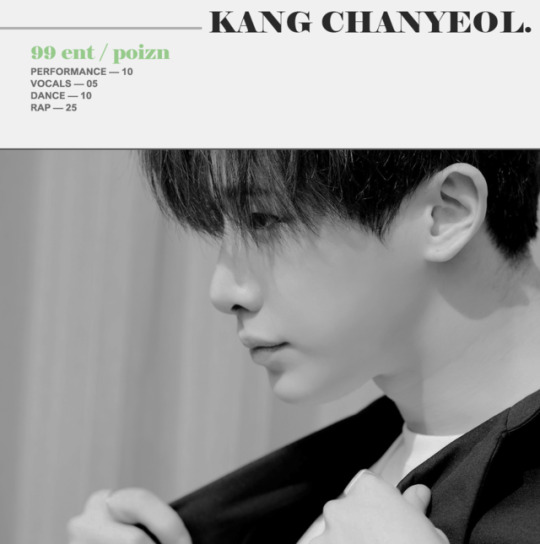
LOADING INFORMATION ON POIZN’S LEAD RAP, LEAD DANCE KANG CHANYEOL…
IDOL DETAILS
STAGENAME: N/A CURRENT AGE: 26 DEBUT AGE: 18 TRAINEE SINCE AGE: 15 COMPANY: 99 ETC: This member is a rap soloist
IDOL IMAGE
Most idols are forced to wear masks, completely fabricated personalities or at least heavily distorted versions of reality, to fit the image desired by their companies. Pushed into boxes without so much as the chance to protest and thrown onto the stage with their new colours displayed proudly. Some take to it well, some can’t acclimatise and fall flat on their faces. On some rare occasions there’s no need to adapt, the person already ticking every box on the checklist, personality perfectly synchronised with the concept. This is the case with Kang Chanyeol.
Poizn have always been defined by their bad boy image, and even before considering his future prospects as an idol this was how he decided to display himself to the world. A carefully curated exhibition of attitude and cock-sureness, delinquency and unpredictability, bluntness and raucousness. And so the transition from trainee is near seamless, and rather than toning him down, burying his cockiness and smoothing the rough edges, they instead focus a magnifying glass on them. Amplifying and exaggerating those aspects of his personality instead, the faint fog of arrogance that surrounds him doesn’t always win fans and he’s grown to be a somewhat divisive figure, but it keeps the group on everyone’s lips.
Time has gone some way to tempering this. These days he is no longer the cheeky upstart with delusions of grandeur and no qualms about stepping out of line or speaking out of turn. The fiery passion that had previously defined him has frozen over. Every year that passes, every scandal that plagues them, and every poorly judged choice from company higher ups serves only to sour him, chilling his demeanour further. He still knows to play along with the group, to do as he’s told and paint the picture they’ve commissioned, and when to shut his mouth but there are times when he can’t hide the disdain.
A rebellion against 99 as much as anything else, he is often deliberately contrarian. A few years back they attempted to re-brand him, to somewhat rehabilitate his image and present Chanyeol 2/0 to the world; an idol that retains the same tsundere charms and devil may care attitude, but with softer edges than before. A savage beast with a heart rather than a up and up punk intent on provoking for the sake of provoking. It’s been met with open arms by some, a healthy dose of scepticism by others, but behind it all he remains the same man as before, barely pulling his punches anymore and most days barely managing to veil his contempt.
IDOL HISTORY
Chanyeol never wanted to play the bad guy, but when most of your life is spent in the company of the amoral and outright dishonourable it is perhaps an inevitability.
To most children money holds little value, just scraps of paper and lumps of metal, but to his parents it is the single most important thing in their lives. To say that he was born with a silver spoon in his mouth would be a vast understatement. The spoon is at the very least golden, the handle encrusted with rubies and diamonds. He never wants for anything. Every need and desire, the finest foods, clothes, education, is catered for with just a click of his fingers, always someone to wait on him. It’s a lifestyle that so many crave, and in his early years it’s one he adores.
As the years roll by however, the novelty begins to wear thin. He’s lucky if he sees his parents more than once a week, and even then, only for a few hours, instead raised by a vastly underpaid minder. Even when they’re home, they’re rarely resent, instead preoccupied with conference calls or meetings. They are more interested in their business than in their son, building the empire that he is one day expected to inherit. A kingdom for an unwilling emperor. They ply him with gifts, buy his affection and attempt to plug the gap with material possessions. It fails miserably.
He struggles connecting with people his own age, having next to nothing in common with his peers. Those in the echelons of the upper class do not share his feelings of disdain, and the rest deem him too snobbish, too elitist to bother with him despite all of his efforts to prove the contrary. A few try to draw close, but as the years pass it becomes clear that they are less interested in him, and more interested in the family coffers. He grows to be distrustful, assuming an ulterior motive in everyone and burning up any would-be Icarus without care when they stray too close to the sun.
He feels ostracised, like a piece from the wrong puzzle; he just wants to be normal. To be noticed by his family, and seen as something other than a walking cheque book. Friends, even. But most of all to be appreciated as a human being.
A lone wolf in almost every sense of the word, on a diet of haywire hormones and teenage angst Chanyeol’s attitude only sours. Attempts to purchase his affection become more and more extravagant in turn. He starts acting out to get some sort of reaction, to pull some response from the ivory tower, but one never comes. Instead it just drives him further into the wilderness, those around him becoming even more reluctant to interact. By age ten he’s buried under a mountain of toys, age eleven drowning in a sea of electronics, and age twelve suffocating under a mass of musical instruments. A guitar, a piano, a violin; he doesn’t even know why. He’s never expressed any interest in the arts. Perhaps they’ve simply run out of things to buy him, or perhaps they truly knew so little about their own son. Either way, most are discarded or forgotten about.
Landing himself in (yet another) schoolyard fight aged fourteen is a turning point. Looking back he can’t even remember what caused the conflict, only that blows were traded and bruises exchanged; split lips and black eyes were near semi-permanent features of his face. The school punishes them, and it forges a strange bond. They clash, but they would go to the ends of the earth for one another. Two kids mad at the world, feeling forsaken by everyone around them. It’s the first time that a real connection is made, and over the months they draw close. The new companion is entrenched in western music, and introduces him to the sounds of 1970s London and 1980s New York and early 2000s Seoul. The sounds draws him in and the attitude makes him stay. Fiery rebellion. No one person better than any other. Anarchy. Punk rock.
When the bassist leaves his friend’s band, he steps up despite not having played a note in his life. “The Sex Pistols couldn’t play when they were recording albums, four chords and the truth is all you need, it’ll be fine.” He reasoned, digging out one of the guitars that had been buried in storage for years. It was here that he learned how quickly he could pick up instruments, and first fell in love with performance. The band ends rather suddenly a little over a year later, tensions within the group rising to unbearable and irreconcilable levels, and his outlook sours once more.
Age fifteen he’s asked by his parents, or rather an employee of theirs, to model for a few lines scheduled for release later in the year by subsidiaries of their main brand. Modelling is not something that he’s particularly comfortable, or even familiar with, at this stage but he agrees regardless. It’s likely just another money saving measure, he realises, but if he shows willing enough he might finally earn their approval. Despite his hesitance he takes to it like a duck to water, and returns to shoot promos twice more over the following months. None of the photos from the second or third shoot ever see the light of day.
After the third shoot he’s caught off guard, a stranger thrusting a business card in his direction babbling about an audition and then scurrying into the crowds outside the studio. Chanyeol simply scoffs. What’s prompted it he isn’t sure (That revelation would come later), nor is he certain how genuine it was. Though his initial reaction is to toss the slip over his shoulder he instead tucks it into his wallet, eyeing it cautiously over the course of a few days before curiosity gets the better of him.
It’s not a path he’s ever paid much mind; in fact it’s one he’s been actively against. The Korean entertainment industry is the antithesis of punk values in his mind, a hive money hungry businessmen watching over a factory floor where teenagers are stripped of personality. Now that the offer’s been made though, he’s rethinking. It would give him direction that he was sorely lacking, free him from the shadow of the family name, fans to feed his ego, and he’d be able to perform for a living… worst case scenario, he can buy out the contract. Best case it’s a platform that he currently lacks.
As it turns out the stranger had been serious, and what’s more when the time comes for his audition he sails through. Contracts are signed, and he’s in. Clean. Simple. Nowhere nearly as traumatic and stressful as he’d heard others make out.
Training is manageable. Gruelling, but manageable. He has less experience than most, weaknesses obvious from the outset but over time he learns to hold his own. The early months are rough, Chanyeol growing frustrated at his shortcomings and barely scraping through the first few evaluations, and he’s often tempted to quit but still he soldiers on. During this time he falls in love with hip-hop, noticing the similarities with the subculture that he knows and loves. The same rebellion, the same danger, the same edge. When it becomes clear that his vocals are weaker than so many of his peers, he instead focuses on rap and only then finds his feet.
There’s always a feeling that he’s treated differently though. The instructors are firm, but they seem to be less harsh towards him. His attitude persists and for whatever reason it isn’t crushed underfoot. This is not a world that he knows well, but even he knows better than to test the boundaries, and so never steps too far out of line, but little things seem to slip through the net. It’s never said aloud, but Chanyeol feels it, and so do his fellow trainees. Nobody dares outright call it out for what it is, but they treat him differently. Some shun him, seeing the treatment as unfair, and some scramble closer hoping that mere proximity will make their ride easier. It’s an all too familiar vision of the past that begins to push him back towards bitterness.
Three years pass before he debuts. Time sees him hone his rap skills and become a skilled dancer, and though his singing still sometimes borders on woeful his stage presence (and more than a little studio trickery) overshadow the flaws. Poizn are an ideal fit, the concept a near perfect match for Chanyeol.
It isn’t long before the scandals begin. Smaller at first, but escalating quickly. Other members take the fall first, tell all articles and exposes by netizens suggesting that perhaps their bad boy image is less of an illusion and more of a reality. When dealing with the backlash it seems as though are intent on making the worst decision possible at every turn; brushing off rumours rather than addressing them, outright ignoring others and letting them fester. Perhaps he should be mad at the members, but in his mind the damage that each scandal has is a failure of management, and the company are entirely to blame for not dealing with them.
For his part, Chanyeol’s scandals have only ever centered on one thing. Not relationships, not sex, not drink, all of that is carefully hidden, but there is no containing his fiery attitude. He is caught on camera in the midst of heated exchanges with several members of staff and other idols on more than one occasion. It all pales in comparison to his reaction to a gaggle of Saesang fans tailing their car one night, when he is filmed exploding at them and using language less than befitting of an idol before storming away.
For this, they pull him from group promotions, effectively throwing him into the cellar and losing the key. The response seems disproportionate considering past actions by 99, and Chanyeol feels personally slighted. That Christmas he returns home, and as is typical of the festive season things end in arguments. He confides in his parents, who have decided to make a rare appearance, about his frustrations with the company, about their mismanagement of Poizn. About how torn up he is over it, how it’s almost destroyed him before he’s even begun. They simply shrug. “Don’t worry about it. Money is the best motivator.” His father says, barely looking up from his plate. It’s as though he genuinely doesn’t understand why people are up in arms. “We’ll write them another cheque, encourage them to let you do what you like. Or we just get lawyers involved.”
It’s said so flippantly that you’d miss it if you blinked. Slowly the cogs click into place. Another cheque. Through gritted teeth he asks the question, gets the answer he expects, and thus begins the shouting match. They didn’t outright buy his place in Poizn, but they paid enough to encourage a scout to wait outside the photoshoot and grant him an audition. He passed on his own merits, but the fact remains that the only reason they saw him was because their palms had been greased. On top of that, a few extra Won had ensured that the entire process was a painless as possible and though he’d had to train just as hard as everyone else for his spot in the lineup rumours of special treatment were not entirely unfounded.
He doesn’t bother to ask why they’d done it, or why they hadn’t thought it worth mentioning. He assumes it’s another misguided attempt to buy his loyalty, or to keep their brand relevant. Nothing would be better publicity than the prodigal son of the fashion moguls becoming a star, after all. Whatever the reason, whatever the intention, it doesn’t lessen the sting or the sour taste in his mouth. Needless to say they now speak even less than before.
Everything that he has, he only has because it was paid for. Every opportunity he’s been granted, the result of a dirty deal. How much was down to him? And how much was down to his bank account? Everyone he chooses to trust believes in him so little that they see the only path to success as corruption and bribery.
The stigma lingers like a bad smell, melding with the countless other controversies of the members that emerge shortly after their debut. The whispers persist weighing heavy on Chanyeol, anytime it’s mentioned he physically stiffens up and looks as though he’s about to launch across the room and punch you. The public see him as a joke. Other idols see him as a punk, and not the kind he’d hoped for. Both simply sneer.
And he sneers back. If they want a villain, he’ll give them a villain.
His attitude only spirals. On camera he becomes gradually frostier, but manages to maintain the image that they’ve built their career on. Off camera he stops caring about how he’s viewed. Stops even trying to be personable, teeth bared and ready to lash out at any given moment. Blunt as a rock, his words drip with venom and tongue cuts like a razor. If you do good by him, he’ll do good by you, but otherwise he has no problem cutting you down as so may others have done to him.
A few years later, of begrudgingly playing the game, avoiding scandal and rising through the ranks, the company are convinced that his image can be rehabilitated. They wish to maintain his hardened, devil may care image, but soften the edges. In return for playing along, they say they’ll give him a solo with creative control. It feels no less dirty being on the receiving end of the bribe, and it’s tempting to refuse but… creative control has always been his endgame. And so he begrudgingly agrees.
Poizn have been around longer than most, at this point a legacy group in all but title. And yet now they are arguably more relevant than ever, the runaway Love Scenario shifting the goal posts. Where at times in the past it had felt as though they’d been coasting, a conduit for scandal and little else, this is a shot at group redemption. It’s enough to wake something up inside of him.
Long term, he’s under no illusions about his future. The chances of his contract being renewed are negligible at best, and frankly he’s jumping for joy at the prospect of ditching 99. The only reason he hasn’t jumped overboard yet is fear of dragging his members down with him. Despite it all, they’re the closest thing to a functional family he has ever known. Besides, it would be foolish to depart when they were riding such a high, so for now he’ll just do as he’s told. With any luck his solo career continues to be a success; consider it an audition tape for any other companies interested in taking him on after he’s unceremoniously dumped.
1 note
·
View note
Text
Subculture and the meaning of style
The term ‘subculture’ dates back to the 18th and 19th centuries and was often used to describe deviants of society - thieves and vagabonds. The word ‘sub’ refers to something of a lower rank.
Post World War 2, ‘subculture’ refers to youthful groups i.e. Mods, Rockers, Teddyboys, Skinheads, Punks etc... Subcultures are typically formed to resist the mainstream culture but they remain (at least at the start of formation) a minority group. They share beliefs and values, as well as lifestyles that oppose the norm of the mainstream society.
Mainstream is about hierarchy. It is the dominant culture shaped by popular/prominent political, media, social and corporate interests. It is found across all parts of society - wherever there is a structured entity, the structure follows. Subcultures questions these structures.
“A subculture ... signals a breakdown of consensus” - Dick Hebdige
Subculture is the refusal to participate in the mainstream. Most look to subvert, parody, or disrupt the mainstream, for example, the popular family cartoon The Simpsons ran through the 90′s as a black stain on society. The Simpsons shows a dysfunctional family, an idea not common on television back at the time when shows such as The Brady Bunch or Full House aired. However, the influence of The Simpsons boosted it into the mainstream, and eventually, that is what it became. Once The Simpsons hit the mainstream, it came down to other such TV cartoons - South Park, for example - to mock the mainstream as The Simpsons became consumed by it.
Empowerment & Impotence.
Case Study 1: The Beats Subculture Elite - mostly male, young, educated, middle class, sexually ambivalent, white. Key people in the movement included Jack Kerouac and Allen Ginsberg. They were Post World War 2, lived during the 1950′s in America (Eisenhower’s America), and alienated themselves from mainstream society. The subculture was named after the idea of being ‘broken down’ by society.
Beat themes:
Anti-mainstream (Straight culture)
Anti-1950′s materialism
Anti-censorship
Opposition to the military-industrial machine
Emphasis on the individual - freedom, the journey counts not the destination
Underlying spirituality/ecological consciousness - Eastern religions such as Buddhism
Don’t alter or edit what comes from their heads as they write on the page
Square Values VS Beat Values: Square values:
Avoid Beat values
Deferred gratification - buy into capitalism and materialism
Conform to bureaucracy
Comfort in routine
Strong work ethic
Family is the moral centre - the nuclear family
Defined gender roles
Deference to religious beliefs
Beat values:
Hedonism - leads to personal enlightenment and shakes the cage of mainstream culture
Spontaneous action against the mainstream clock
Distain for work ethic
Anti-materialism
Looked to eastern cultures
Non-binary relationships
Non-comformity
Beat culture was seen as very dangerous to conservative values. The mainstream absorbs subcultures. Subcultures become mainstream. Beats were vilified in America - ‘beatnik’ was a derogatory term used against them but Beatnik itself also became a subculture - a caricature of Beat subculture and were typically categorised as:
Sloppily groomed
Turtle neck and sweater
Nonsensical slang
Furthermore, Beatchick became its own subculture:
Oversized sweater
Weird and spacy
Deviant/morally suspect
Sexually available
Beatniks became synonymous with the criminal underworld. Films were made with a story involving criminal Beatniks. Subcultures are cyclical. Through the decades, Hollywood became sympathetic towards the Beats and kinder depictions of the forefront individuals of the subculture began to be released on film. Moreover, the rise of the Hipster subculture has been described as ‘Beat caricature’.
Case Study 2: Punk (1970′s Britain) Hebdige described Punk with the thought that no subculture has tried with such ‘grim determination’ to detach itself from the norm. Punk articulated frustration of the young working class - the alienation of this group from mainstream society. Youth unemployment was high during this time and there were constant strikes. With no money, no job, and a boring day to day life as a result, Punk subculture began to rise. The mainstream told the public what to do with their time, but youths had no way to conform to these ideas with no money and no way of getting money.
The Visualisation of a Subculture Cultural Capital - the creation of stuff - zines, for example. People who make and do things.
The influence of the subculture elite - alternative ‘codes’
DIY culture
Detourenment
Demystification
Vivian Westwood and The Clash were part of the elite of Punk subculture. A manifesto on a t-shirt of what you should be into and what you shouldn’t.
Straight Culture (in the opinion of Punk):
Television
Clockwork souls
Dumb Popstars
Good fun entertainment that isn’t good or funny
Dress Code:
Very original
Took elements from cultures that came before - collage to create something new known as Bricolage.
Safety pins kept their clothes together and were a practical solution to real, working class problems. They became an aesthetic.
Anti-taste
Cross gender dress
Provocative imagery on t-shirts
Original and non-uniform
Pushed the boundaries for what censorship should be
Subculture Rituals:
Nihilism
Speed logic
Participation in the spectacle - blurring of audience/performer dynamic
The ‘Pogo’ - up and down dancing because it was impossible to move
Sarcasm
Demystification
Iconoclastic - destroy your idols
Anti-corporate - anti-elitism
Amateurism as a virtue - Debunked the idea of needing specialised knowledge in music, graphics, and image to create music, graphics, and image
Desire for authenticity -> The Slits were an all-female punk band who didn’t know how to tune their instruments
Production of zines
DIY culture:
Cassettes and tapes, music, fashion etc
Creative control, not going to a middle person
The primacy of the punk 45 single
Development of visual lexicon
Punk cultured differed locally and was encouraged by fury and spontaneity.
Semiotic code:
Anti-aesthetic
Urgency and energy
Cheaply printed
Deliberately crude (but well composed)
Photo-montaged - the photograph is clearer than the illustration
No rock star posturing - no one posing on the cover with their guitar
Random note style lettering. Stencilled
Themes:
Class and suburban (irony)
Anti-consumerism
Urban decay
Criminality
Subversion of the mainstream
Punk reached America.
Detournement - interference subversion:
The aping of parent culture
Appropriation and altering already lasting media artefacts
Situationalist International - Situationalism in 1960′s Paris was short lived but held the idea that if you can interfere with capitalism, you can influence things. Drawing on bill boards and graffiti, for example. King Mob in the late 1960′s London were a situationalist group, and pranksters. Jamie Reid - The Sex Pistols and his lexicon of ‘Do it yourself’. Punk graphics came from his worldview.
Punk gear became mainstream. They had to change it to retain it. Punk is reframed over the decades on television, in books, and graphic novels. It is now possible to cherry pick the best parts of the subculture for mainstream consumption. It is no longer dangerous or edgy - it can now be contained, monetised, and commercialised.
The art becomes curated.
2 notes
·
View notes
Photo

“The Road to Rock n’ Roll - Guitars” Date: March 14, 2019 © Scott Fraser Photography
Dedicated to Rod Coulter. The first guitarist in my life.
In 1971 legendary guitar player and song writer Alvin Lee wrote the song “I’d Love to Change the World”. I was born in 1970, so it’s before my time. But I did grow up listening to it, thanks to three amazing uncles. In 1994, the Sunset Strip based band, L.A. Guns released a cover of it on their album Vicious Circles. With all respect to Alvin Lee, I prefer Tracii Guns’ version of the song. It’s got an edge to it. It touches my soul. Tracii’s chops, his notes, pure, clean, defined, at times ethereal, and delivered with a punch - I can’t help myself, but smile. I end up air guitaring to it every time. In my head I see his fingers on the fretboard, and his other hand as he strums and picks. I see the body of the guitar, the pick-ups, the dials. In my head while I am listening, Tracii is playing live on stage, and I am front-row right in front of him, soaking up with every sense, the moment.
But let’s back up a bit.
1975 was a seminal year for me. It was the year I decided I wanted to play drums, and it was the year I took an active interest in photography. I was five at the time. Thanks to the music of Brian Wilson and the Beach Boys, and a couple of photographers named Linda McCartney and L.A. based photographer Greg Papazian.
Uncle Art was cool enough to allow this little kid, hang out with him and his friends. CHOM FM would play in the background while Art and his friends would flip through rock magazines. Here I was this five year old kid hanging out with a bunch of fifteen to twenty year olds, while they chilled, played cards and listening to music. I loved it, it was my sanctuary. I would sit quietly out of the way, and just listen as they talked about the music playing, and the photographs in the magazines. They would discuss for hours on end the merit of this song, or that song. Who played it better? The meaning of the lyrics, how “deep” a note went, the crunch of the electric guitar. How cool so and so looked in that shot. And they would ask me what I thought, including me in the conversations. They were teens in the mid seventies in Montreal, had long hair, and cool clothes. Leather jackets and denim, like their heroes in the bands they listened to. That bedroom in that little house on the east end of Montreal is where my rock n’ roll journey began.
In the fall of 1975 I would buy my first albums at a local record store. I knew I wanted a Beach Boy album, and I had enough money saved up to buy a second album. I had hoped that Art would come along to advise me as to what to buy because I wanted something that wasn’t my mom and dad’s music. I wanted something like the music I heard on the FM station and like what Art and his friends listened to. I ended up purchasing a K-Tel album with a bunch of different bands playing songs on it. I figured it was the best way to own new music.The first song I fell i love with on that record was “Smoking’ In The Boys Room” by Brownsville Station. I had hoped when I bought the album that I would have new songs to play my drums along to. But it was the guitar playing that caught my attention. The twang, the rhythm and the way it sounded. Yeah, I loved the drums in it as well, but it really did catch my attention because of the guitar. It’s a balls out blues tune done rock n’ roll.
The music photography of the early seventies until the late1980’s would show case some of the best photography ever done. Before the internet and modern social media, bands and musicians used photographs in magazines to define their image and look. The record labels had long ago realized you could sell more records if your band was being showcased in a music magazine. It was also the era of the fanzine as independent writers, journalists and photographers documented the local scene. It was the era as a teen that you hung posters of the bands you loved on your bedroom walls. And many went a step further, like myself, cutting photos out of magazines to pin to on our walls. Punk and Metal came of age, and Generation X grew into teens and young adults. Raised on the photographs, posters and the FM waves we grew into young adults as we searched for our own identities. Static images had been our visual medium of consumption, that is until video came along and killed a radio star.
As a teenager I got five dollars a week allowance, so it would take me three weeks of saving to buy a new album which was anywhere from ten to fifteen dollars. Birthday, christmas or any gift money went towards music. In a month I could save and buy one album and one to two rock magazines. Babysitting and odd jobs were a means to an end. It was an era where a lot of the time that meant I bought an album without hearing more than one song on it. Other times you bought because you had liked the artwork, or photos on the album cover. Or maybe your friends had talked about it, or you had read about it in Circus or Hit Parader magazine.
My friends and I would make agreements as to who bought what album so that we could get together and share them. I’d buy Metallica, Rod would buy Ozzy Osbourne, Jay would buy Def Leppard. My friends and I would trade albums with one another so that each of us, could get a chance to hear new music. You went out and bought the albums for yourself so that you could look at the photos, the artwork, and the credits and if you were lucky, the lyrics while listening to the album play. You went to concerts and bought T-shirts, posters, back patches and tour books and when you got home from the concert, you’d share it all with your friends the following day.
Back to the guitar…
I’m a Randy Rhoads guy. Yes, I appreciate what Jimi Hendrix did. But I prefer the sound, the tones and the classical influence of Randy’s playing. Randy was a metal/hard-rock/classical guitarist. Those iconic photos of him with his Les Paul and Jackson V are forever burned into my memory. That first time I heard Crazy Train by Ozzy off of the Blizzard of Ozz album, I was blown away. In that moment I knew I would never ever play that good, and I was okay with that. I didn’t have to. I knew right then and there, I wanted to either play in bands and with people who could play like that, or somehow be part of the scene. Maybe I would be a roadie, maybe a guitar tech, maybe a lighting guy. I didn’t care what I did, as long as I was part of it. Over the years I played in bands, worked as a lighting tech, help promote shows and gigs, created gig posters, designed album covers and T-shirts, and have done roadie more than I care to admit.
To this day I can’t play guitar to save my life. That is on me. I have owned some beautiful guitars over the years including a 1986 USA made Kramer, but I never put the time and effort in to really learn. There was always something else I wanted to do, and I liked singing, so I would work on vocals. I did however fill my life with guitar players. Starting with Rod Coulter who had been a childhood friend and it has continued to players like Benny Kemp who plays in a rising speed metal band Roadrash. They are my friends, they are people I call Brother and Sister, they are my Rock n’ Roll Family. They have been my mentors and others have been my protege. We’re a family and I am so grateful for that.
At fourty-eight years of age, I still love my music loud. I love my punk more than ever, and am still listening to my metal. I still air guitar along to the songs I love. If I know the words odds are I am going to be singing along. I still think of putting a band together form time to time and recording album, maybe one day I will. These days though, I am happy to be the Photographer. I love photographing musicians and their instruments. I am an editorial music photographer. I’m there to document the moment and in the process make the musicians look good. I am shooting first and foremost for the musicians. I am also an artist, so i want to have something that means something to myself as well as the musician in question.
At this stage in my life my photographs have been published in music magazines, used as album covers, album art work, promo posters and T-shirts. I’d like to think I have my own style, and I thank my mentors for taking the time to teach me how to do what I now do so well. Thank you Mike, Scott, Greg and Frank - my shots wouldn’t be what they are without your tutelage.
Guitars the photographic series, is my tribute to the instruments first created by Leo Fender and Les Paul all those years ago. It’s about the players and the instruments that define rock music. The photographs within the series is for the musicians who play the notes. It may just be “a piece of wood, with six metal strings” but in the hands of a musician who knows how to play, it is tool of magic. It’s my attempt as an artist to create a visual representation of the moment, the energy, the sound being played. To capture in colour and monochrome, the feel of it all, at that moment the music is playing. The use of noise and grain to match the distortion and saturation of the Marshall amps. It is my humble attempt as an artist to say Thank You.
You can look at the photographs without music playing, but it’s better if you have the song turned up.
Playlist: L.A. Guns - I’d Love to Change The World https://www.youtube.com/watch?v=TSog8WmD6uQ
Brownsville Station - Smoking’ In The Boys Room https://www.youtube.com/watch?v=5K59EMGgrUA
Kiss - Detroit Rock City https://www.youtube.com/watch?v=iZq3i94mSsQ
Ozzy Osbourne - Crazy Train https://www.youtube.com/watch?v=vy1V5LHXWbg
Ozzy Osbourne - Mr. Crowley (live 1981) https://www.youtube.com/watch?v=G3LvhdFEOqs
April Wine - Don’t Push Me Around https://www.youtube.com/watch?v=wWiU8rkA_yU
Alvin Lee - Detroit Diesel https://www.youtube.com/watch?v=uXedZ_EsI_4
Savage - Handful of Rain https://www.youtube.com/watch?v=x7EeM2AK1gA
Toccata - Carpimus Noctem https://www.youtube.com/watch?v=XOANxP5ZvuY
Megadeth - Tornado of Souls https://www.youtube.com/watch?v=Lcm9qqo_qB0
Joe Satriani - Always With Me, Always With You https://www.youtube.com/watch?v=VI57QHL6ge0
Social Distortion - Prison Bound (live) https://www.youtube.com/watch?v=lIWHlIhvt3Y
1 note
·
View note
Photo
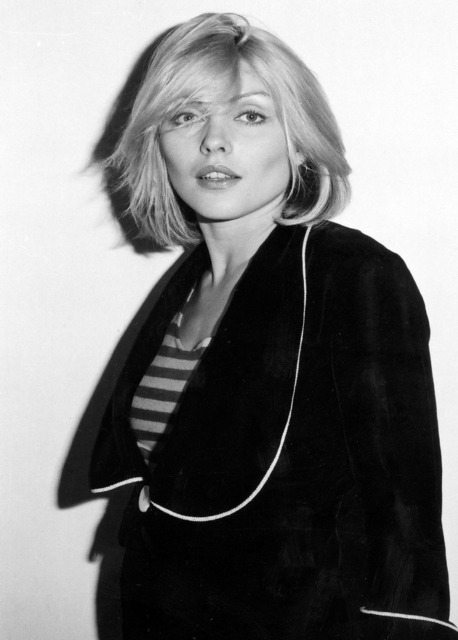
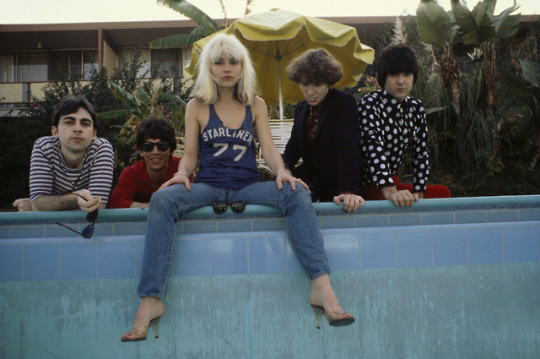
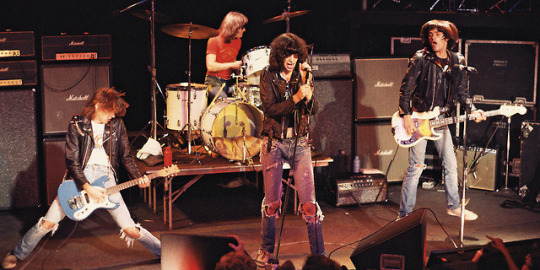
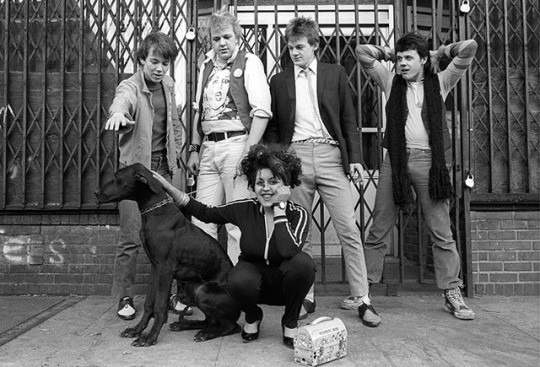

Punk is more than a sound
Punk is more than just a sound, it’s a whole way of being, and rock’s new rebels preferred lived-in T-shirts and Levi’s.
Loud, fast, and simple, punk rescued rock‘n’roll from suffocating on its own excesses, giving the genre a razor-blade edge it hadn’t had since its earliest days. The rebellious spirit and willingness to question traditional conventions—like the idea that you had to know how to play an instrument before you could start a band—would find their way into nearly every meaningful musical revolution that followed, from hip-hop to indie rock to techno.
Music’s only ever been just one facet of punk’s identity, though. It’s more than just a sound, it’s a whole way of being—a philosophy, an attitude, and, crucially, a look.
Punk’s sonic foundations were laid down in New York City by the same people who established the beginnings of punk style: artists like Lou Reed, the Ramones, Suicide, and the New York Dolls who wanted to strip away the bloat rock had accumulated in the psychedelic era and return it to something purer. While Led Zeppelin and the Rolling Stones matched their arena-filling ambitions with equally elaborate costumes of velvet and sequins, rock’s new rebels preferred lived-in T-shirts and Levi’s.
“We came out of the glam scene,” says photographer Paul Zone, author of Playground: Growing Up in the New York Underground. “So by the time ’74 came around and glam was winding down, probably 50 percent of the people in that scene were involved in what would come to be known as the punk scene. It was just that our flamboyance got a little more played down.”
“There was still fashion going on,” Zone adds. “They’d go to the thrift shops, where you could find vintage clothes. Black Levi’s jeans became a staple for everyone who was there. When it comes to Levi’s and jeans, they were being used in a lot of different ways. In the glam days, the Dolls were wearing little boys’ Levi’s jackets that where so small that they could hardly get their arms in them.”
In the mid-1970s, the new New York sound and style came into focus through the Ramones (who created a uniform of shredded Levi’s 505 jeans and black leather jackets), Television(whose guitarist Richard Hell was one of the first performers to rock spiked hair and torn T-shirts held together by safety pins), and Blondie (fronted by Debbie Harry, who pioneered high-low mixes of Levi’s and designer pieces), and other groups that orbited divey clubs like CBGB. “They had no money,” photographer Jenny Lens recalls. “The holes in Joey’s knees were from wear and tear. They were not fashion. I have photos of Dee Dee Ramone wearing a leather jacket, and around the wrists it’s really frayed. It was shameful back then to run around with holes in your jeans, and the Ramones said f—k that, that’s who we are!”
Blondie, 1977; Photo by Suzan Carson/Michael Ochs Archives/Getty Images
By the time people started calling it punk, the revolution had already started to spread around the globe. Malcolm McLaren managed the New York Dolls before returning to London where he and partner Vivienne Westwood operated a boutique called Sex. Inspired by what he saw in New York, he combined the Dolls’ over-the-top outrageousness with Richard Hell’s deconstructed style to create a quintessentially British spin on punk fashion and tapped his new clients, the Sex Pistols, to promote it.
“McLaren went back to England and emulated the look and gave it a little more pizzazz with hair colour and putting more fashion into it,” Zone explains. At the same time, other London punks like X-Ray Spex—fronted by Poly Styrene—seized upon the movement’s DIY philosophy and started using staple items like jeans and leather jackets as blank canvases to decorate with pins, paint, and spikes.
At nearly the same time as it crossed the ocean to the UK, punk spread to L.A., where fans of the Ramones and Blondie adapted their distinctive looks to fit the city’s unique identity. “What we were doing in L.A. had to do with a lot of factors,” Lens says. “One was the weather. We could have a lot of thrift stores and a lot of yard sales, church bazaars. We don't have the rain and snow and cold that you have in London or New York. We were very into that DIY thing. You could repurpose [clothes], you could cut them up and do things with them. We’d rarely wear the same thing twice.”
L.A.’s bands were diverse, from pop-friendly acts like the Go-Go’s to the defiantly anti-commercial approach of the Germs, to bands like the legendary X who sat somewhere in between, but they were united by the bonds of their tight-knit community. “The fashion was very organic,” Lens says. “There were no paid stylists. We were stylists for each other. Everybody was going to thrift stores together, going to bazaars together, sharing each other’s clothes. It really came out of dressing up every day and expressing yourself and being an artist. You could be an artist who expressed themselves visually from head to toe and also on stage. Or not—you could be a photographer or a graphic artist or a fan or whatever.”
The L.A. style comes through in one of Lens’s favourite photos of the time, where X singer Exene Cervenka and scenester Pleasant Gehman pose in a shower at a loft where the pioneering fanzine Slash was throwing a party for Devo. “Pleasant had bleached her jeans and written ‘Slash’ for Slash magazine,” she explains. “Nobody had bleached jeans then. We did a lot of things that other people weren’t doing.”
Forty years after punk started, the music continues to reverberate, not only in the punk scenes that have popped up in cities and small towns around the world, but in the indie and alternative movements that punk inspired. In fashion, its influence has spread even further. You can see some of X’s rootsy simplicity in the indie rock uniform of jeans and T-shirts, and the continuing influence of McLaren and Westwood’s vision in the complexly customised jackets that have become de rigueur for rap stars. Punk style’s most enduring legacy can’t be boiled down to a particular item of clothing, or even the popularity of distressed jeans and dyed hair. It’s more about the idea of being authentic, that if you do your own thing and dress your own way, you can make the world change around you. “We would take what we would see in fashion and make it our own, where other people would take what’s in fashion and just run with it,” Lens says. “We influenced fashion more than the other way around.”
5 notes
·
View notes
Link
Throughout their active career, the Beastie Boyshave had a unique relationship with skateboarding. Despite none of them being particularly accomplished on a sponsorship level, they maintained an authentic connection to skate culture for so long that it’s hard to imagine the two not being linked. However, when their debut album Licensed to Ill was released in 1986, the synergy between skateboarding and mainstream music was tenuous at best. The idea that three Jewish rappers from New York City – a decade-plus before the entire East Coast had a thriving skate industry – known for boisterous hip-hop rock party anthems connected with the then-subculture of skateboarding was foreign, to say the least. Contextually, there were no bands charting who had any real roots in skating, and if they did, it wasn’t touted as a marketing tool. In fact, there were only a handful of pro skaters from the East Coast, let alone any who were Jewish.
Skateboarding in the mid ’80s was California; hip-hop was still finding its legs and identity in culture and the actual music industry, and the only true “skate” music being pushed was skate rock via Thrasher Magazine’s editorial and compilation albums. During this time, skateboarding still had a very Anglo-punk stigma to most, which was completely inaccurate considering how many Latino and Asian pioneers there were in the sport, and hip-hop represented urban street culture. The two seemed worlds apart. But for Adam Yauch, Mike Diamond, and Adam Horovitz, whose musical journey began in punk rock clubs and dance venues around Manhattan, cultural lines were bridged by subway stops and the explorative innocence of youth. There were no better ambassadors than a bunch of wise-asses steeped in crate digging, graffiti, DIY, and utilitarian fashion to champion skateboarding. Contrasted against INXS putting skate photography on the cover of Kick a year later, the Beastie Boys posing in photos with skateboards just seemed like how they got to the shoot rather than a prop – and it probably was.
Unlike most music autobiographies, the new Beastie Boys Book traverses more than a band’s story arc within music. While the 590 pages do detail several industry clichés – including cowboy booted A&R guys and tense relationships with major labels – the monograph is a written and visual journey of style, trend, music, fashion, culture, art, slang, and, most importantly, friendship. While the book has many characters and B-stories, the main figures are the three members of the band and the locales of New York City and Los Angeles. Written by surviving members Michael Diamond and Adam Horovitz, Beastie Boys Book is also a love letter to Adam Yauch who, despite being just a year-ish older than Diamond and Horovitz, comes off as a mentor and almost stabilizing figure of the iconic band.
Unlike Diamond and Horovitz, Yauch is depicted as a the least celebrity-yearning of the Boys, never fully assimilating to fame as evidenced by his spiritual journey and immersion into Tibetan Buddhism. As the group’s constant, the images of Yauch throughout the book, save several where he’s wearing costume, are the most stylistically consistent. While his facial hair combos often fluctuate, MCA mostly looked what we identify now as a “typical skateboarder,” which is fairly accurate since he was, but there’s more significance than him being able to pump on a halfpipe. Yauch’s and his bandmates’ affinity for skateboarding not only set off a grip of style trends and influenced soundtracks and even brands (via their friendship with Spike Jonze), but it can be argued that it grounded and revitalized their careers.
The genesis of this relationship began with their 1989 sophomore effort Paul’s Boutique. Though it is now heralded as a masterpiece, it was initially a commercial disappointment and consequently thrust the band, most of whom had relocated to Los Angeles, out of the spotlight. Prior to their second album the Beastie Boys were superstars, but they not only lost their glow but, even worse, appeared kitschy to their mass audience as the funked out dance track “Hey Ladies” was their only single to chart. For many, the last images they had of the band were them dressed up in garish 1970s gear, emulating both Saturday Night Live more than rising rap crew.
Several other visuals were crafted in support of the record, but it was “Looking Down the Barrel of a Gun” that proved predictive and revelatory. Directed by Yauch himself, it’s a lo-fi pastiche that mixes candid footage with clips from action sports videos, and it even shows Yauch skating on the streets of Los Angeles. In between the surf, skate, and snowboarding tricks are footage of the band recording the track, driving around stoned wearing costumes, a confused kitten, and generally staying loose without the frat bro layer. In a sense, the song and video are the secret sauce that created the loose, free blueprint that allowed their subsequent effort, Check Your Head, to hit so hard.
When the project’s lead single “Pass the Mic” was released in 1992, it was a lowkey announcement that Beastie Boys were back for the first time. They hadn’t lost the irreverence of their early “Cookie Puss”-era, there was a nod to their punk past with a Bad Brains sample and production that was both sparse and dense at the same time, as well as wealth of skate clips/B-roll in between the vocal deliveries for the video, including footage shot at the ramp they erected at their G Son studio while recording the album. During the tail end of the track they even announce that they’re going to “rock this joint in an old school way,” which was more than a stylistic declaration but the announcement of a cultural zeitgeist.
Though the group was simply wearing the clothes they had always worn, albeit without the B-Boy bravado and accoutrement, what happened in that seven-ish year stretch was that 1980s clothing had become vintage. So rather than looking slightly out of date, they stepped it up by pairing newly vintage parkas, denim, and trainers with newer yet classic workwear, specifically Carhartt and West Coast-centric Ben Davis, as well as peppering in sunglasses, beanies, and even simple Champion hoodies (which had yet to become a thing). The Beastie Boys were not only fresh, but coyly self-referential. It might be an oversell to say it was the birth of modern retro-vintage, but then again, maybe not. In fact, the only thing that really wasn’t emulated to a degree in the wake of Check Your Head was MCA’s oversized snowboarding boots, so expect those to pop off in 2020.
With imagery shot by iconic music and skate photographer Glen E. Friedman and typography designed by Eric Haze, the cover of Check Your Head was also a visual mash up that spoke not only to the band themselves but what was happening in culture – hip-hop had become a part of mainstream America as well as the soundtrack of street skating, which was the industry defining voice at the time. Haze had also designed a promotional skateboard for Vision for the band that never made it past the prototype stage back in the Licensed to Ill days, which has since become a collectors grail. Check Your Head’s cover – a subtle take on Minor Threat’s final 7” Salad Days, also shot by Friedman – and music not only became one of the most important examples of punk, funk, hip-hop, rock, and psych music blending together into a new form, but even the clothes the band is wearing on the cover spoke to the audience. Remember, this is 1992, in the thick of an era where hair metal clichés and the B-Boy looks of the 1980s were being phased out. Grunge was starting to boom, rock stars dressing like their audience was a new thing, and even though gold ropes and chains were still in the mix, rappers in 1992 were far from dressing in the club looks of their forefathers. Here were the Beasties; wearing beanies, Ben Davis, and deadstock sneakers, well before brands knew what models to retro, let alone retro anything at all.
After a string of successful singles, the Beastie Boys made a meaningful connection while working on a promo video for “Time For Livin’.” Even though the under two-minute hardcore punk track wasn’t a proper single, it was edited and featured “out of focus” live footage shot by a young skate photographer, videographer, and writer “put on by Yauch,” named Spike Jonze, who they had previously met in 1991 while he worked at the short lived magazine Dirt. Jonze fused the black-and-white and color performance footage with raw skate footage taken from Plan B’s “Questionable” video. Heralded as a superteam, Questionable was the most innovative skate video released at the time and featured three Beasties tracks during pro Mike Carroll’s part.
“I got an advanced copy of the album from Lance Dawes at Slap Magazine,” Carroll told Highsnobiety when we discussed the video. “When it came time for the video we used the music from that advanced copy – I didn’t think anything of it, because the album wasn’t even out yet. So yeah, we didn’t get the rights and the album didn’t even come out for two weeks after Questionable. It’s pretty fucked up. [laughs] We were recently on a Lakai trip in Japan and Tony Hawk actually asked us if we got permission to use those Beasties tracks. Years ago he was snowboarding with MCA and Tony asked him if Plan B had gotten permission. MCA told him we didn’t but said it didn’t matter because he thought the video was ‘sick,’ well… he used some other words, but getting that sign off was all that mattered.”
Hailing from the Bay Area, Carroll (who would win Thrasher’s coveted Skater of the Year award two years after the video) was one of the leaders of San Francisco’s E.M.B. crew that was setting all the technical and style trends in skating in the early ’90s. Even though he was sponsored by Vans at the time, Carroll specifically had a penchant for deadstock Puma and adidas, as well as Ben Davis and beanies, making him almost appear as if he was somehow an associate with the group.
“I’ve always tried to figure out how it all started [the retro craze],” Carroll says. “It was going on before Check Your Head but that album – the cover, the videos, especially ‘So What’cha Want,’ that whole style is where it started for me, really set it off. Stop dressing like a goofy boy and get back to normal. When I first started skating I had Puma Clydes, then I saw Cab [Steve Caballero] wearing them, then a few years later this was happening. I got a pair again at a place in SF called Famous Footwear, but when we traveled to England on a Plan B tour I must have bought 10 pairs of shoes because we couldn’t get those old shoes in the US. There was a store in SF called Kaplan’s that would sometimes have Campuses or Shelltoes, but I don’t think I ever even got any there. Later on Nick Tershay [Diamond Supply Co.] met Paul Shier [Pro skater and current team manager for adidas Skateboarding] and he’d start sending shoes to him, and for me too.”
Oddly enough, Girl Skateboards, the brand Carroll formed with Jonze, Rick Howard, and Megan Baltimore in 1993, would not only release Beastie Boys decks (including a recent capsule collection), but released a video directed by Jonze in 1994 titled “Goldfish,” which featured skits that mirror and the famous “Sabotage” video Jonze had directed just a few weeks before. Much like their video for “Hey Ladies,” Jonze channeled the specific, genre satire that was central and symbolic of the group, but with much more success, nailing the references and tone perfectly. To add another layer, in 1993 Jonze was at a party with the Beastie Boys when Howard mentioned his idea to start what would later become Girl to Jonze. As he told the Nine Club, Jonze – knowing that Mike D was an investor in the original XLarge store and brand – wrangled everyone together and convinced them to distribute the conceptual brand via XLarge.
PreviousNext1 / 6
Back to the Ben Davis for a minute. In the Beastie Boys Book, Diamond elaborates on his role as an investor in the original XLarge store in Los Angeles. He mentions the having the idea of a brick-and-mortar store that would not only carry difficult to seek out workwear but also deadstock sneakers, crediting founders Eli Bonerz and Adam Silverman with actualizing it. Originally opened in Los Feliz, on Vermont Street, Los Angeles in 1991, the store instantly clicked with skaters, hip-hop, and graffiti heads alike, even employing several skaters such as former Menace pro Billy Valdez. Not only did it start to become an underground culture enclave, but it was the go-to spot for out of town heads to cop gear. As pro skaters and musicians traveled back East or to wherever they called home, they were returning with clothes and sneakers that weren’t on the average racks, as well as X-Large gear that was initially only available at the store.
In 2012, Girl and sister brand Chocolate released Pretty Sweet, a full-length video directed by Jonze and Ty Evans which featured Carroll, Alex Olson, Rick McCrank, and Brian Anderson, skating (fittingly) to “Looking Down the Barrel of a Gun.” Both Olson and Anderson have recently become fashion icons themselves. The video’s New York premiere was attended by Diamond, Leo Fitzpatrick, Michael Rapport and Kanye West who reportedly commented after the viewing that, “That shit was stylistically dope.”
Looking back specifically to the era of Check Your Head and its documentation in the Beastie Boys Book, the transformation of both the band and youth culture as a whole is striking and surprisingly understated in other monographs and media. If you experienced it, the impact was massive; so obvious that it’s just part of your DNA. At a time when a live performance was a more momentous experience, when photographs and media of artists was still rather sparse, seeing the Beastie Boys on MTV Sports skating the G Son ramp or watching them discuss vintage clothing and their perspective on fashion during a House of Style segment was a validation of underground movements from the people invested in it. While they may not be the “definitive” skate band, the Beastie Boys, through their videos, Grand Royal magazine, as well as diverse opening act choices, acted as gatekeepers – the older guys who made you the perfect mixtape and hipped you to other worlds. Whether it was skateboarding, soul, funk, rap, punk, graffiti, or fashion, they offered the perfect mix to a global audience, feeding a creative boom that pushed the ethos and aesthetics of streetwear, skateboarding, and music forward for generations.
4 notes
·
View notes
Photo
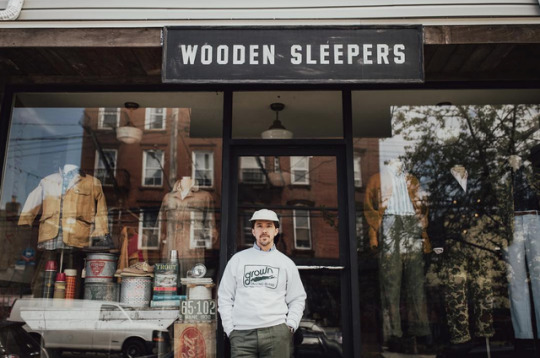
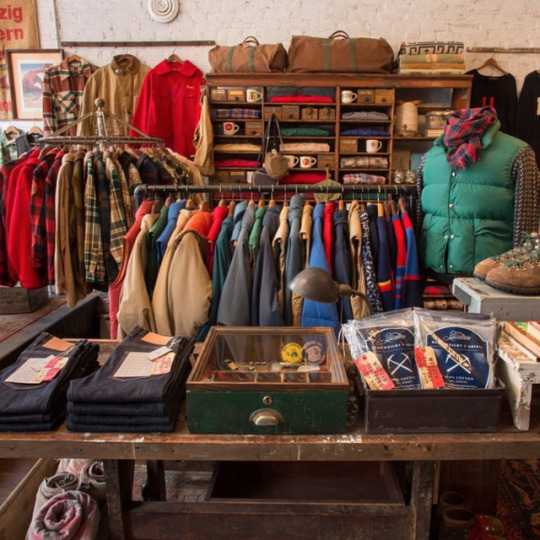
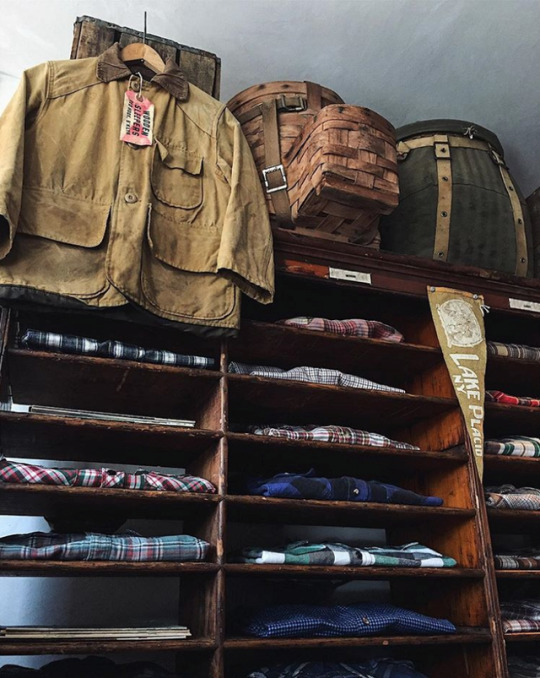
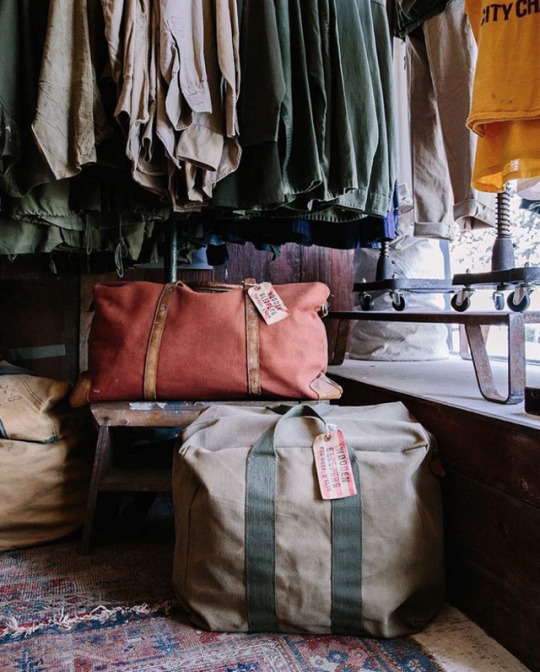

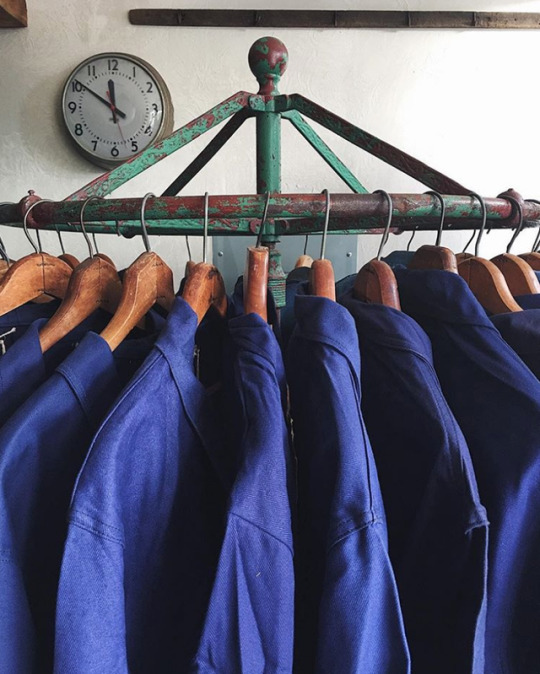

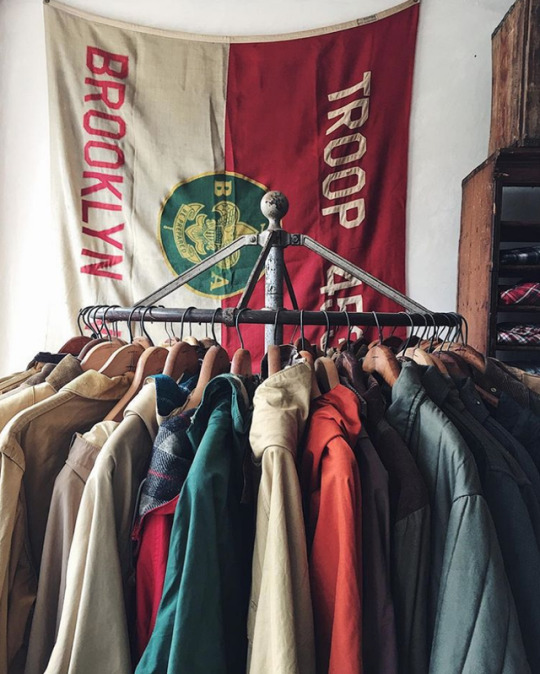
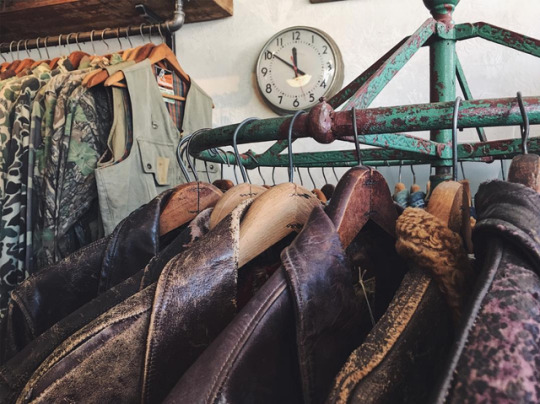
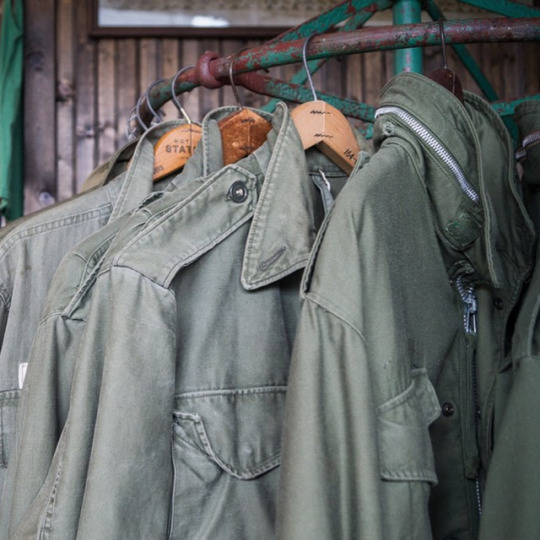
Digging in the Crates: Talking with Brian Davis of Wooden Sleepers
Wooden Sleepers is the kind of store I wish was near me. Brian Davis, the shop’s founder, has been around the menswear scene forever, but first opened his shop seven years ago on Etsy. Back then, he just had simple listings for his vintage finds, which ranged from classic Americana to workwear to Ivy Style items. A few years later, he opened a brick-and-mortar shop in Brooklyn, which has been since become a destination spot for men’s style enthusiasts. Japanese menswear magazines such as Free & Easy have featured the store; GQ called it the best new vintage menswear shop in NYC.
When Brian opened his brick-and-mortar, he took down his online web shop in order to focus on his physical location. Carefully setting up the interior decor and presentation was a lot of work, too much to also include shooting photos and selling online. Now that Wooden Sleepers is more established, however, they’ve jumped back on the internet. This past month, they launched a fully dedicated online site (although inventory is still being added), and they’re been developing an in-house line of Wooden Sleepers totes, caps, and sweatshirts (we love all of it). They even shot a fall/ winter lookbook.
I recently sat down with Brian to talk about his store, his history with vintage clothing, and his style suggestions for guys who are are looking to incorporate a bit of vintage into their wardrobe.
Tell us about how you got into vintage clothing and how you started Wooden Sleepers.
I grew up on the east end of Long Island, skateboarding and listening to punk and hip-hop music. I lived with my grandparents at the time, a long way from any of the shopping malls. Buying second-hand clothes from local church shops was a way for me to rebel against the Abercrombie & Fitch crowd -- this was around the early- to mid-90s, when A&F was big. Looking back, a lot of the stuff I used to rummage through would later influence my taste in clothes as an adult – seersucker suits, oil-stained mechanic jackets, vintage Levi’s, etc.
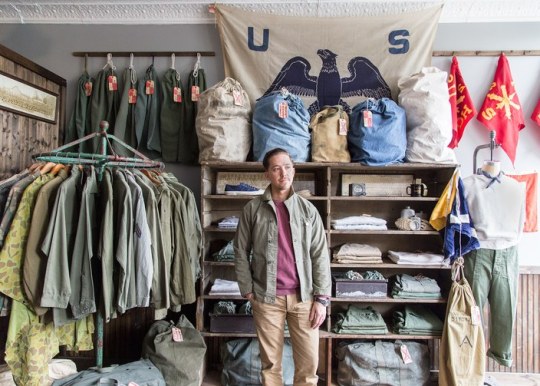
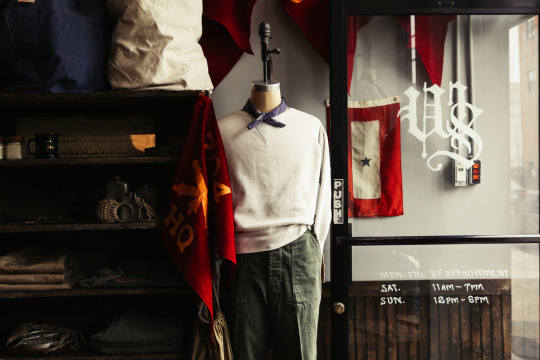
Fast forward to 2010, I was working a corporate job and wanted a creative outlet. My girlfriend at the time, now my wife, encouraged me to set up my own clothing shop. This was when heritage and Americana were huge online. There were sites such as A Continuous Lean, Valet, and Put This On; New York City had the Pop-Up Flea; Etsy was just getting started, but was still a fairly unknown thing. So I started listing stuff online for my thrifted finds. We launched on Etsy in 2010 and then opened a brick-and-mortar in 2014.
That’s surprising because, right around that time, many brick-and-mortars started struggling. Do you find it difficult to do a brick-and-mortar business in NYC nowadays?
The New York Times had a story not too long ago about Bleecker Street, a big commercial area here with global brands such as Marc Jacobs and Ralph Lauren. At some point, the landlords got greedy and raised rents, and now all those businesses have had to move out. Maybe they could have afforded the rents, but it probably didn’t make sense given the amount of business they were getting from the area. And now, when you walk down Bleecker Street, there are a ton of empty storefronts.
My goal as a business was never about being part of that world. When I was looking for a shop space, I was looking for a place with a thriving community of small businesses. We found that in Red Hook in Brooklyn. Our street is very much orientated around mom-and-pop businesses, with great restaurants and small shops. We’ve actually seen our business grow year after year.
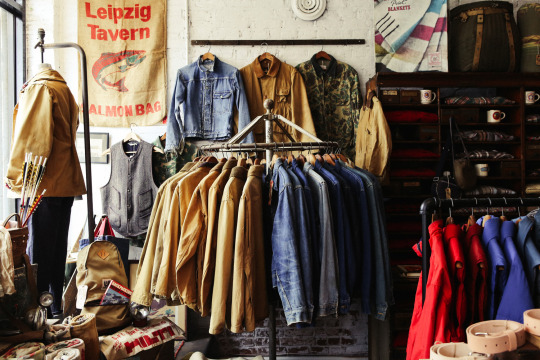

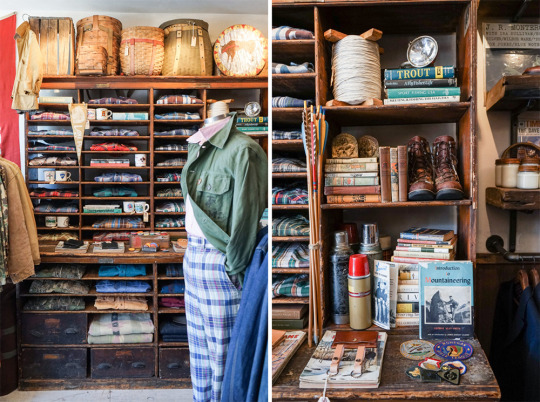
But many small NYC clothing stores have closed – Gentry, French Garment Cleaners, Carson Street Clothiers. It’s not just big brands that are struggling, it seems like it’s everyone. People are so used to comparison-shopping online, they’ll find the cheapest price possible for any given item. Do you feel you’ve been able to escape this as a vintage clothing store?
I think so. Although you can still comparison shop with vintage clothes, nothing is ever going to be the same exact piece. If you find something and it’s “the one,” you may never see it again. Sometimes there are idiosyncratic details or nuances that make it just right.
I also think we’re lucky to have a community that supports us. As a consumer myself, I try to support local and small businesses because I know those companies can easily disappear. And that’s not great for the neighborhood. We have many customers outside of NYC, but we’re also lucky to have lots of guys in the neighborhood that enjoy shopping with us. And they’re guys who aren’t going to get on the computer to see if they can find something for ten bucks cheaper.
How do you get your stuff?
No two days are the same. There are wholesale places that sell bales of vintage clothing. So, you go and buy these dirt-cheap lots, sorted by types of clothes – sweatshirts, t-shirts, jeans, etc. But you have to buy so much junk order to get a few gems. That’s how you get these huge vintage stores with a ton of inventory, with racks and racks of stuff.
Our business model is the exact opposite of that. We have a very small store, which forces us to edit. I only want the gems. Which means I have to go out and source things myself, often piece-by-piece. That can mean anything from crawling around an attic to get vintage chore coats to digging around an estate sale. Sometimes I’ll follow a lead I read about; sometimes I network with other pickers around the country. The key is to always be sourcing because out of ten leads, only a few will be good.
You network with other vintage sellers?
Yea, it helps to have people out there who can tell you when they’ve found something, but aren’t in your specific market. I once met an antiques dealer at a flea market who had a stack of old work clothes. I bought the jackets and told him I had a vintage clothing store in Brooklyn. So, we traded info.

A few weeks later, he called me out of the blue and told me he found an old, boarded up mom-and-pop shoe store in Ohio that has been closed since the 1970s. Inside were hundreds of deadstock boots. He wanted to know if I was interested in buying them.
I was skeptical at first since sometimes things are deadstock for a reason – maybe they’re in odd sizes, for example – but he promised they had a good size range and everything was in great condition. So, I told him I was interested. He ended up driving all the way to NYC from Ohio and we met up at my store at midnight. I bought 150 pairs of boots from his inventory. Had shoeboxes going up to the ceiling that night.
I’m surprised those things still happen. I can imagine finding up an old boarded-up place with deadstock items in the ‘80s, but with the internet, it feels like anyone can offload stuff online.
I’m as surprised as you are, but those pickers still exist. From a business perspective, you’re getting the best margin. You’re getting stuff that people think is garbage, so you’re getting it for the lowest price, and then you’re able to find specialty collectors or buyers. It takes a ton of work. These people are often waking up at 3am just to find things, driving around searching for old stores, looking for hidden gems. It takes a certain kind of person.
Do you ever get people coming in off the street with an unusual find for sale?
Not yet, but I once got a call from Richard Press, the former President of J. Press. It was great because I’ve always been a huge fan of the company. He helped broker a sale where I was able to get a bunch of stuff that was in the personal collection of a former J. Press tailor. One that had worked for the company from about the 1960s to the ‘80s. In the collection, there were hundreds of ties, sport coats, trousers, and deadstock shirts. It was so great to see Richard’s face light up, to see how excited he got about clothes. I feel like it’s so easy to get jaded about things, especially in the fashion industry, but Richard had this youthful excitement about him when he saw old things from his family’s store. It was really special.
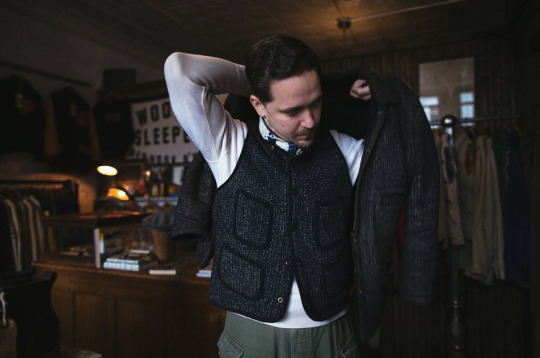
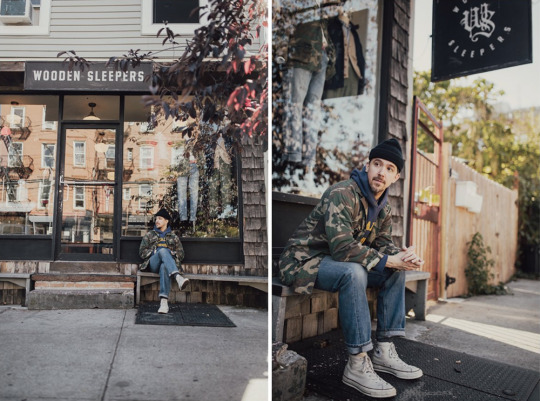
Are there things you’ve picked up along the way that you’ve decided to keep it yourself?
Well, I always want to give my customers the first crack. I’ve always hated those vintage stores that dangle the best stuff from the ceiling, but only for decoration. That said, I’m an outerwear nut and NYC winters can be brutal, so I was pretty excited to get a Brown’s Beach jacket to go along with the vest. The jackets are rarer than the vest, and I was lucky to find one that fits. My 1940s USN deck jacket is also a favorite. Mine is olive; the navy one is a bit of a unicorn.
A lot of the stuff I wear, however, isn’t that rare. I like madras shirts, old Brooks Brothers button-downs. I like cut-off military khakis, vintage military jungle jackets. Anything from that ‘60s and ‘70s Vietnam War era, in the OG-107 cloth. Some of those vintage military fabrics were made from a cotton-poly blend, especially in the later years, but the earlier stuff was often pure cotton. That’s the stuff you want because it ages in a really nice way.
As a guy who cleans and repairs things for his store, do you have any tips on how to clean vintage clothing?
A lot of it is common sense. Cotton things can be thrown into the wash; wool items will often need to be hand-washed or dry cleaned. A lot of what I buy is vintage workwear, so they’re things that have been through a lot – a washing machine isn’t going to hurt them. There are some things I leave behind because they’re too raggedy, but there’s a lot you can save with a bit of mending and cleaning.
If you find a vintage item with a musty smell, you can also spray it with a 50/ 50 mix of white vinegar and water. It helps freshen it up a bit. The vinegar smell goes away, and with it, it takes out some of the smell you occasionally find in vintage clothes.
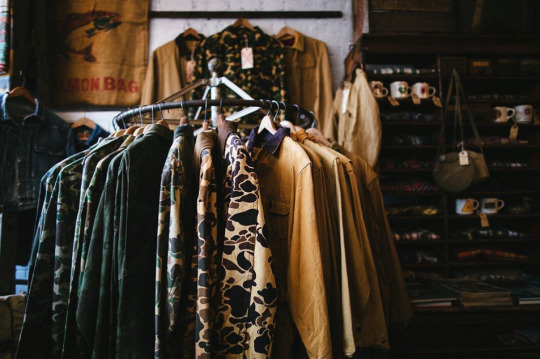

For readers who are interested in trying out vintage clothing, do you think there are some pieces that are easier to wear than others?
Definitely, go with the classics. A French chore coat or a Levi’s trucker jacket. Unless you’re shopping at the very high-end of the market, buying brands such as The Real McCoys or RRL, you can often get a vintage piece that’s cheaper and cooler than more mainstream items. Even a Levi’s trucker jacket from the 1980s is going to look better than a mainline Levi’s jacket in the same style, but new.
I also really like getting guys into bigger pants. The pendulum has swung so far into the slim-fit trend that guys can feel like it’s a revelation when they wear something fuller. Maybe a pair of fatigues isn’t right for the office, but they’re great for the weekend. For spring and summer, you can wear them with simple, canvas sneakers, such as Jack Purcells or Chuck Taylors. For fall, they look great with brown, plain-toe service boots. For me, the key to wearing fuller pants is that you don’t want a break. Otherwise, they can look really messy. If you roll them up a little, you get a fuller cut without any of the bagginess.
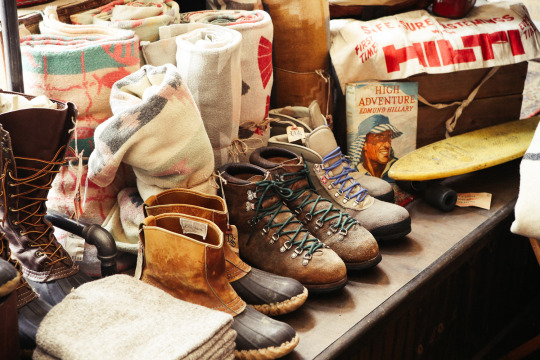
M-65 military jackets are also really easy to wear. 1950s and ‘60s military issue khakis. Denim chore coats. Especially with chore coats, if you’re not a connoisseur, you’re not going to care if a piece is from the ‘40s or ‘50s or ‘60s. The look is the same, which means you can come up on something that looks great, but is reasonably affordable. Again, they go great with jeans, sweatshirts, and heavy boots. They can fit a bit roomy, but I think that’s the charm.
I know what you mean. Sometimes when the fit is too precise, especially with workwear, an outfit can seem too precious. Ethan Newton once told me how he likes vintage leather jackets because they fit in idiosyncratic ways – which is just another way of saying they don’t fit perfectly. I think that can be good with certain looks.
I agree. We’ve spent so much time talking about effortless style, but sometimes guys get too worked up over details. Just put on the jacket and wear it. A lot of this is much simpler than sometimes it’s presented online. It goes back to the first day of school and wearing a jacket that makes you excited, a jacket that makes you feel cool. It can be about a feeling.
Thanks for your time, Brian.
Readers interested in Wooden Sleepers can visit them in Red Hook, Brooklyn or shop from their new online store. They’re also on Instagram and Twitter, where you can keep up with their daily happenings.
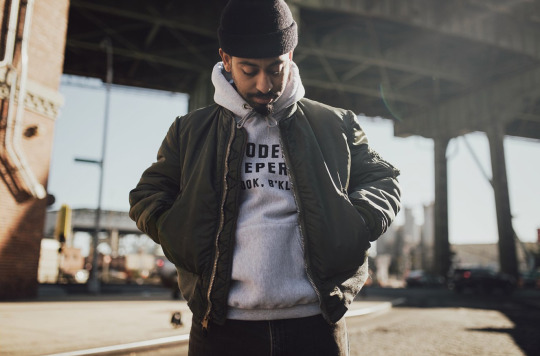
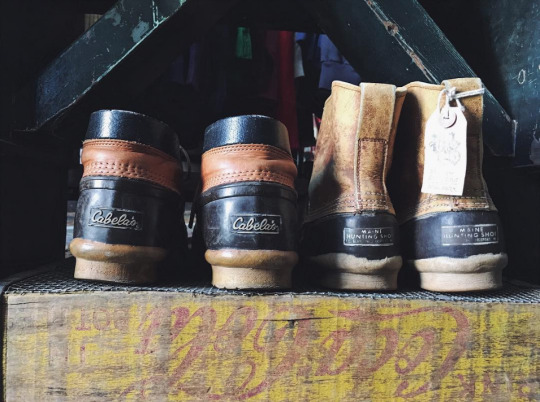
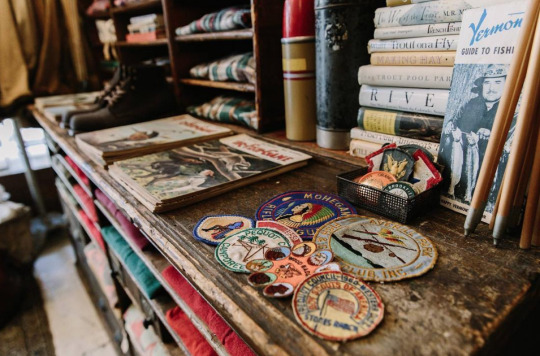
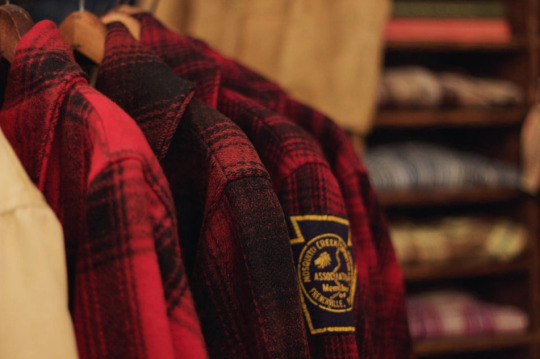
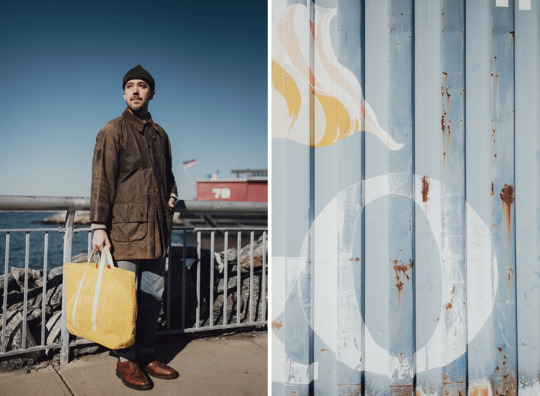


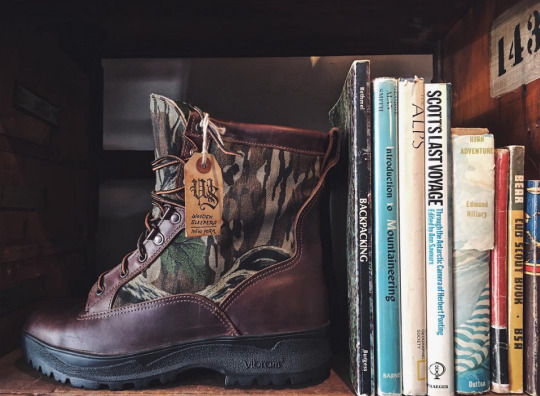

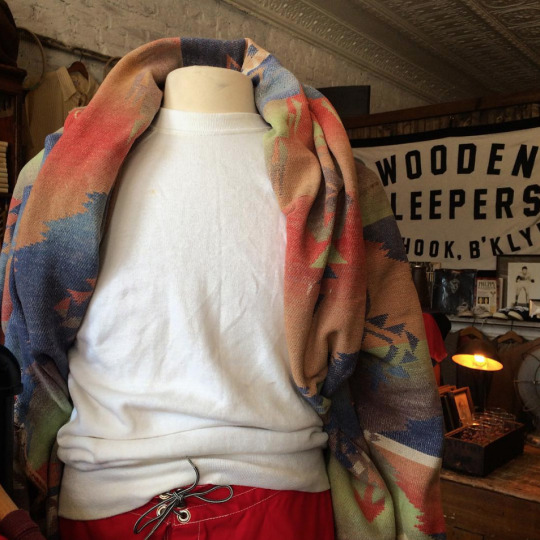
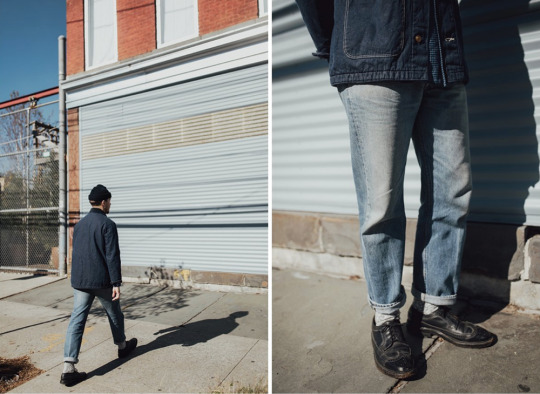

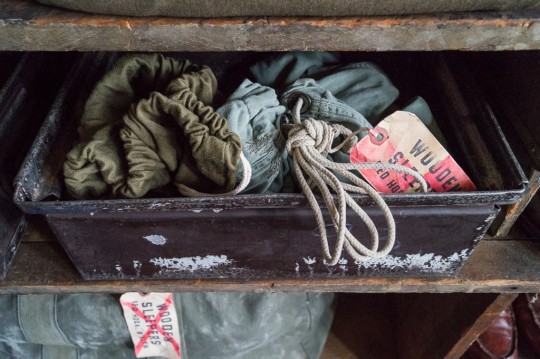
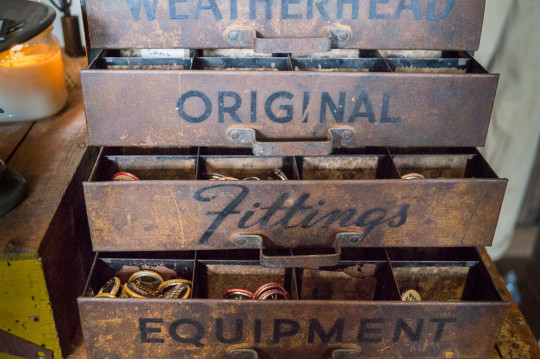
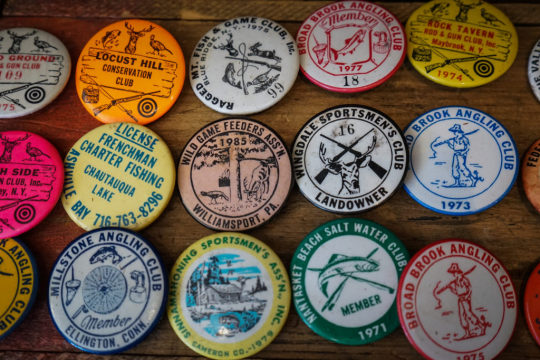
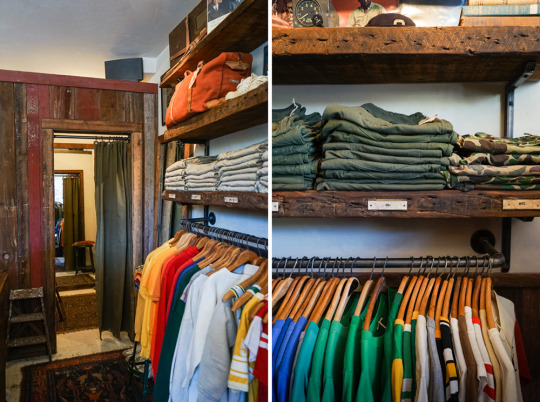

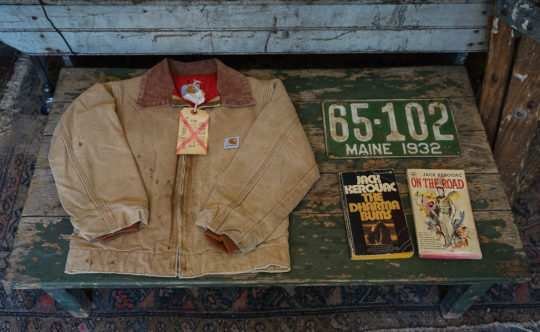
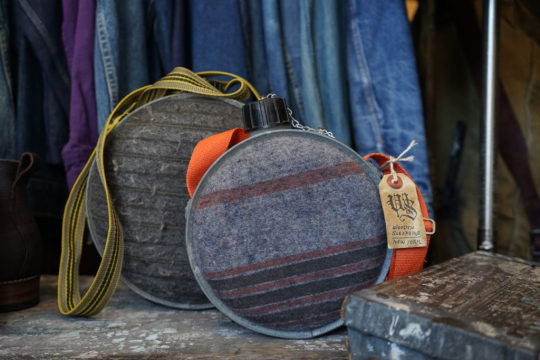
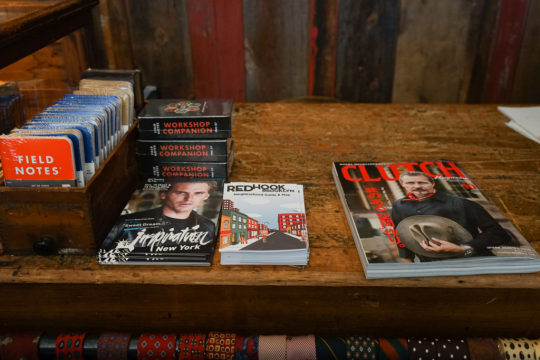
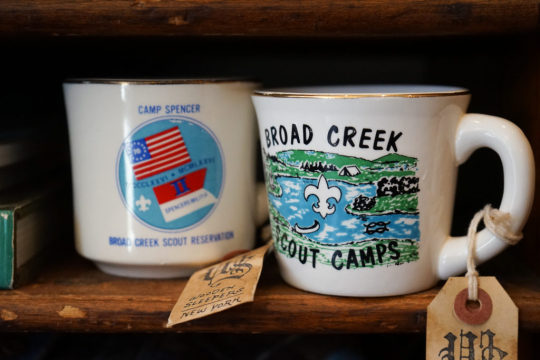
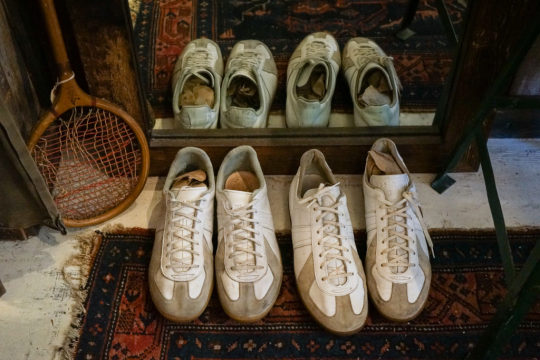

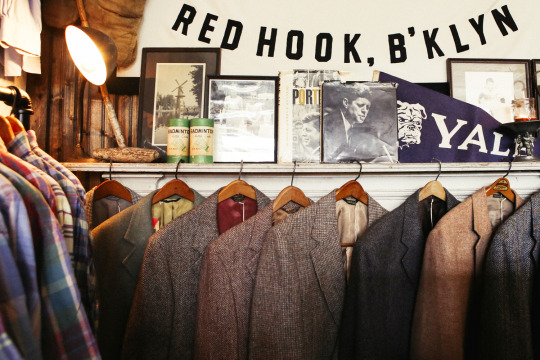
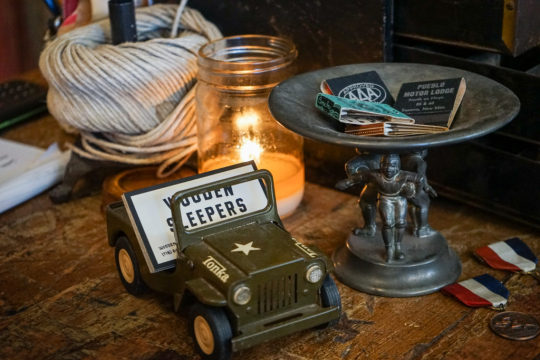
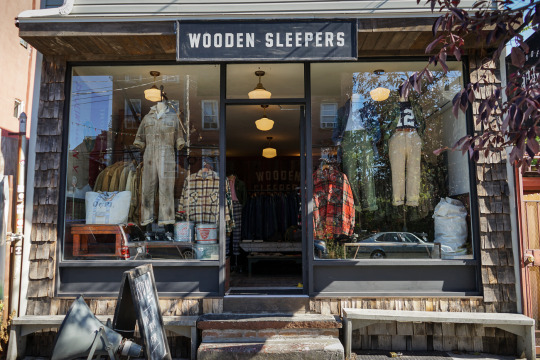
167 notes
·
View notes
Text
Grunge Style And Style
TELEVISION programs like 'Sabrina The Adolescent Witch' and also 'Conserved By The Bell' both shook the preppy design, the mini skirts and plant tops an awful lot too and also of course jeans, denim, denim! It was intended only for the male sex and as a result women have to do without it. The top of the tennis shoe is made up of polished natural leather that is glossy. They were an enormous pattern in the 80s and were used with heels or pumps, skirts as well as leggings. The tonal top qualities in grunge were breathtaking which aided connect with followers of rock-and-roll globally. Do not wait for anything-- get it done if it was your favorite 90s hairstyle as a youngster! Most likely the concept of style and being in style is to look comparable to possible. And also of course, the Tights which certainly, was just one of the components of the 80's fashion that made a large comeback pair years earlier and are widely accepted in the style fad currently despite fashionistas. Data evaluation and venture services have gradually crept right into the fashion business. I have located they have the best array, as well as are the cheapest for your authentic 80s clothes. He mixed the classical design including visual dressing with Paris style. And while the majority of 80s fashion was awesome, but the puffy sleeves as well as parachute pants have to continue to be in the eighties. Only few significant acid rock as well as hair steel bands survived the grunge and different assault in the mid-90s. This is likewise popular in the 80s and could be a good costume that you could think about every now and then. Certainly, our country is still the appeal of protecting the Vakko, Beymen, Solo, Intelligent, Knitwear, Dumb, such as brand names and a variety of shops worldwide of fashion patterns immediately clients bulusturuyorlardi. It has come to be a hype not just for clothes lines but likewise for fashion devices.

She made use of the pictures we took with FASHION on her compensation card when she initially mosted likely to Paris and ended up being the lady of the minute," includes professional photographer Chris Nicholls. This can not be necessarily stated of the style from the previous years, since they share common aspects that make them tough to distinguish from each various other. This certain rosary obtained instant globe attention due to the fact that Dolce & Gabanna used David Beckham as a model to promote it. After his photo was on the cover of a prominent fashion magazine using this rosary the buzz began. Sports footwear had been put on as casual wear prior to, but also for the first time they came to be a high-priced style thing. Many thanks for analysis as well sonnenbrillen herren as I'm glad you took pleasure in the journey down 90s lane ... despite the massive cellular phone and plaid skirts. In other places, brand names such as Fred Perry, Levi's pants and also Doc Martens were tremendously preferred with participants of the skinhead movement. Punk style today is not virtually as severe in comparison to exactly what punks used in the 80s. You can discover 80s fashion, or something you could become 80s fashion, almost anywhere. If you removed every one of the movies of the last 5 years or so that were remakes of 1970s photos after that you would certainly be entrusted to a lot much less to view. Despite the fact that miniskirts gained appeal during the 1960s yet they returned in fashion throughout the 1980s females style. If you are the showy type or want that high end style thing then a journey to Harvey Nichols or Flannels is a must. One of the most crucial element of the 1980s ladies's fashion is that it is really simple to identify the fashion of this duration. That you can find something concerning any type of subject you want, consisting of 80s fashion trends, online makes this an excellent approach of performing your search. Right here are some wonderfully accessorized handles male gown, job wear and also conventional apparel.

2 notes
·
View notes
Text
Iris Publishers_Journal of Textile Science & Fashion Technology (JTSFT)
Punk, Fashion and Aesthetic Cosmopolitanism
Authored by Paula Guerra

Abstract
In this article we propose an analysis of the genesis of Portuguese punk fashion. Due to the overvaluation of the London reality, punk clothing may at first sight show a homogeneity. However, by considering different realities and socio-historical contexts, it is possible to establish a more detailed view of what was and what is punk fashion, and the constant appropriation and actualization of this aesthetic. In Portugal, in the years after four decades of dictatorship, this fashion constituted a form of disruption. Through a set of interviews with key actors of the Portuguese punk scene, we will try to determine how this disruptive fashion was triggered and also how it allowed the country’s aesthetic and cultural opening to a late modernity.
Keywords: Fashion; Punk; Do-it-yourself; Aesthetic cosmopolitanism
Abbreviations: KISMIF: Keep It Simple Make It Fast! Project; DIY: Do-It-Yourself
Introduction
Fashion and punk. Few styles have provoked (and still provoke) both an appeal and an aversion as punk does. Aversion was even pursued by the punks themselves, and that’s something that makes the appeal even stronger. It is a cycle. Therefore, it is not surprising there are numerous books, articles, journalistic works, photo books, etc. about this theme. Ironically, in a counter-punk way, this avalanche of information on punk aesthetics eventually crystallized a punk outfit with such a striking visual force that still endures today. But it creates and recreates itself in an unbroken circle since the late 1970s. Punk has fueled innovation in fashion and contemporary visual imagery in a spectrum of incessant resurrection and death [1,2]. In terms of ideology, punk assumes itself as a contesting movement in the artistic, economic and social dimensions. It was, in Western societies, a landmark of rupture and repositioning in relation to the existing social structure accompanied by a soundtrack and a visual imaginary. It was more than just a t-shirt or a song. It was an un-submissive attitude that broke the status quo and gave visibility to a youth that was unsatisfied and disbelieving the future [3].
And what was the context that allowed the emergence of punk? The genesis of punk is often interpreted by the context of economic crisis that violently hits western nations in the wake of rising oil prices. At that time, the last bastions of Great Britain’s economy were sinking: the automotive and textile industries are struggling with enormous difficulties, as so the coal and metallurgy industries. Prices raised up, wages stagnated, and unemployment increased. Hebdige, et al. [4] interpreted the punk style as a visual response to England’s socioeconomic crisis during the late 1970s [5,6].
The purpose of this article is to analyse the subversive and disruptive characteristics of punk fashion and aesthetics in Portugal. What are its specificities and similarities to the British reality that we mentioned above? How was that appropriated in a small country, completely isolated by 40 long years of dictatorship? As we will discuss in more detail throughout the text, the Portuguese socio-political context was quite different. On April 25, 1974 the Revolução dos Cravos [Carnation Revolution] occurs, which means the end of 48 years of political dictatorship carried out by the Estado Novo regime [3]. A revolution had taken place, but a cultural and customs revolution was yet missing. Fashion is a paradigmatic example in this matter. Immediately after the April 25, 1974 revolution, fashion had not changed significantly. There was a dress code, so to speak, normative. For men, the colors did not differ much: blue, black or white. What came from abroad was expensive and arrived often with delay. Hence the importance of punk in providing a universe of aesthetic possibilities to a group of young people through Do-It-Yourself (DIY) (there were also a few who could buy fashion accessories on trips to London, but they were reduced in number).
It is well known that one of the major sociological concerns is to assess how the diffusion of fashion takes place. Is it from top to bottom or vice versa? Is it a structured process or the sum of random events and actions that puts a style on the spotlight? Crane, et al. [7] considers that currently it is a highly complex process due to the geographical dispersion of the various actors involved and the huge diversity of products generated. There are two best known sociological theories on this subject. The classic model was postulated by Simmel, et al. [8]. A stylistic novelty would first be adopted by the upper classes and then progressively spread to the remaining social classes. Styles appeared in haute couture houses and over a period of time reigned there. But soon those styles were beginning to be imitated either by peers or by other social classes. By the time fashion reached the bottom of the social structure, it was depleted. Fashion is here associated with social status. Its legitimacy is only convertible into capital if its expansion is restricted. When social closure is broken, legitimacy is lost. It would be a top-down model. The second theory is based on the opposite. It defends a bottom-up model. The new styles would emerge in the lower classes and would be progressively adopted by higher social groups of the social scale [9]. Prestige is no longer associated with social status but with age. New fashion styles come from youth groups. Subcultures and youth tribes, above all. These subcultures have distinctive ways of dressing, one that attracts the eye of the fashion industry and imitation by other social and age groups [10]. These novelties would come not only from the young but also from artistic and minority groups such as homosexuals.
In both models, however, diffusion processes are accelerated by the media. In the nineteenth century, fashion needed some time to spread, not only in the country of origin, but also abroad. With the mass media, however, the whole process underwent a profound acceleration. The first model was dominant in Western societies until the 1960s, when demographic and social factors accentuated the influence of young people in all social classes. The baby boomers were a generation with economic possibilities that were unthinkable for their parents, and this factor influenced many spheres, namely fashion. Since then, the second model explains better the reality of fashion in Western societies. Before we talk about subcultures and punk in Portugal, it is important to analyze in what context punk fashion ultimately emerged. Concretely, what was fashion like in the 1970s in the Anglo-Saxon world? For Steele, et al. [11], the style of the 1970s was some kind of bastard son of the 1960s. It unveiled a confused revolt against his ancestor. One thing needs to be said. In the 1970s, fashion was not in fashion. Or rather, anti-fashion was in vogue. Mainly, freedom to use whatever and wherever one wished was the essential requirement. Fashion of the 1970s can be divided into two phases: the first, from 1970 to 1974, is characterized by the continuation of many late 1960s features such as retro costumes, shocking clothing and ethnic influences. Valerie Steele, et al. [11] calls this phase the ‘late hippie diffusion’. The second phase goes from 1975 to 1979, and fashion became both harder and more conservative. At street fashion level, hippie, peace, and love were suddenly replaced by punk, sex, and violence. On the other hand, in haute couture, prevailed the decadent style of terrorist chic [5]. At the same time, and paradoxically, there was a search for uniformity around dress-for-success clothing [6,11]. There were two main trends in this decade: androgyny and punk. This is explained by the continuing importance of music in fashion’s domain. Just as mods and hippies created their own styles, so did punk. It was an aggressive style of confrontation, with an outfit marked by references to sadomasochism. Above all, it was against the remaining hippie remnants that they existed [5,12,4,13]. Punk was riot. The clothes were cut, pierced with pins, decorated with swastika images or tampons. It was a shock. Quickly, however, the shock passed into a major influence on the fashion world. With punk, it had become a spurious task to seek to establish strict separations between anti-fashion and fashion [14].
Although part of a broader context of cultural production, and as a consequence of constraining time and space, we will focus very briefly solely on the importance of Vivienne Westwood. In 1971, Westwood and Malcolm McLaren rented the back of Paradise Garage at 430 Kings Road. Initially named Let it Rock, they sold rock’n’roll records and teddy boys-style clothes designed by Vivienne. Then began ten intense years of subversive creativity. Regardless of the various incarnations of Vivienne and Malcolm’s store, the common catalyst for their creations was the revolutionary and anarchic attitude and the struggle for a new aesthetic. In 1973 there was a new name change: Too Fast to Live, Too Young to Die. But it is the following year, in 1974, that the store is renamed: Sex [15,16]. Here, rising above any measure of comfort and social selfindulgence, Westwood operates a visual poetics of deconstruction and chaos, materializing in the wearables a certain esprit d’époque that beckoned the loss of stabilizing social and cultural coordinates. Operating incisions, tears, and violations, Vivienne inaugurates an unprecedented empiricism that deconstructs the very market organization of a ready-to-wear market by appropriating massbought black t-shirts and remastering them. In these t-shirts, Westwood performs what would become the look of punk, inseparable from the urgencies of the time [17].
It is possible to identify today all the cultural and symbolic matrix of Vivienne Westwood’s creations. For example, from a small shop on Kings Road to Paris, Westwood has enhanced her influence in the fashion world by gradually joining a circuit. Often accused of selling out to the system she once criticized, Westwood became between the 1980s and 1990s a global, millionaire venture; despite its virtual belonging to the capitalist logic of production, Vivienne’s aggressive and ironic aesthetic still carries that old noise of (in) contestation, transmuting the catwalk’s sacrosanct space into a platform for debate and protest [15,18]. That’s why Theresa May - the former English Prime Minister - was wearing a ‘classic’ Westwood tartan at her swearing in ceremony in 2016.
Materials and Methods
The data presented and discussed here is the result of a long research that lasted from 2012 to 2017. A set of 214 semi-structured or biographical interviews, conducted between 2013 and 2015, were performed to self-representing actors as punks or linked to the development of Portuguese punk scenes. The 214 interviewees of the KISMIF project have in common the present and/or past participation in the Portuguese punk scene: either as musicians, or as promoters, editors, critics and other intermediaries, or as consumers. The interviews were guided by a script with more than 50 categorical entries. The interviews were transcribed and object of a classic analysis of content and/or other quantitative and/ or qualitative speech treatments. The sample was constructed by the snowball method, following the contact networks between the actors, from an initial base referenced by the research team. The analytical object was established through the contacts provided by the interviewees, which gave the research a wide territorial range. Our methodology was shaped by the categorical content analysis so as to grasp the meanings and purposes of social actions, thus favoring qualitative and intensive perspectives. Our approach methodology focuses on (sub)cultural analysis. Hebdige, et al. [4] argues that after World War II there was a profound change in the way social classes were experienced in England. Especially due to changing structural factors: the media, work, leisure and education, the increased purchasing power of young people, among others. One effect of these changes was the fragmentation of discourses about what it meant to belong to the working class. These new speeches were different from the traditional ones. From the perspective of the Centre for Contemporary Cultural Studies, the emphasis was on how subcultures sought a solution for the problems affecting working-class youth. Those solutions could not overcome the fact that these individuals were in a subordinate position in the social structure. This tension, especially striking in a hierarchical society like the English one, was reflected in the form of subcultural style [4].
Subcultures can be defined through concepts such as DIY and homology. The first leads us to the new meanings that subcultures attribute to objects, while the second relates to the connection, the homology between the symbolic dimension and the material dimension of subcultures. In other words, the objects associated with a given subculture acquire their own meaning for its members, reflecting or expressing its explicit and implicit values [19]. Considering the punk subculture, Hebdige, et al. [4] explores its dimension of refusal and revolt against the socio-economic conditions in which working-class youth lived, stressing out that it was largely asserted by the style that functioned metaphorically as a weapon against the ruling class, as well as the fact that no subculture has managed to further break with dress norms and no subculture has so actively caused social disapproval to fall upon itself as punk did. It should be noted that wearing or using a garment is not, by itself, synonymous with style. There is the need for a stylization process, a conscious organization of objects, a repositioning and recontextualization, which removes them from their original context and thus enables new readings and resistances. It is precisely through this process of stylization that subcultures communicate their forbidden messages and meanings, as well as their collective identity [20].
For More Open Access Journals in Iris Publishers Please click on: https://irispublishers.com/ For More Articles in Journal of Textile Science & Fashion Technology https://irispublishers.com/jtsft/
For More Information:https://irispublishers.com/jtsft/fulltext/punk-fashion-and-aesthetic-cosmopolitanism.ID.000568.php
#Irispublishers#Iris Publishers LLC#Textile open access journals#Open Access Fashion Journals#Iris Publishers Open access Journals#Fashion Journals#Textile Science Journals#Iris Publishers Textile Journal
0 notes
Photo

LOADING INFORMATION ON POIZN’S LEAD RAP, LEAD DANCE KANG CHANYEOL...
IDOL DETAILS
STAGENAME: N/A CURRENT AGE: 26 DEBUT AGE: 19 TRAINEE SINCE AGE: 16 COMPANY: 99 Ent. SECONDARY SKILL: Lyric writing
IDOL PROFILE
NICKNAME(S): N/A INSPIRATION: Pretty much everyone from the third generation onwards was influenced to some degree by POWer and Chaneol is no exception. Seeing their rappers perform on television first got him fascinated by the entertainment industry and has influenced the direction of the road he’s walked thus far. He also has an affinity for Midnight and in more recent times has found himself subtly influenced by the way that they conduct themselves in the public eye SPECIAL TALENTS:
Can play any song by ear on the piano after hearing it once through.
Able to perform an uncannily accurate impression of the 99 Entertainment founder as well as his members
Accomplished beatboxer
NOTABLE FACTS:
His parents own an extremely successful fashion company have major investments in several industries
Chanyeol is a graduate of SOPA’s (School of Performing Arts) Practical Music department
Was the guitarist in a three piece punk band (Along the lines of Vanmal, but far wilder and grittier) before joining 99 Entertainment. This has largely been scrubbed from his history.
Has a level two small drivers license making it legal for him to drive a motorcycle despite not currently owning one.
IDOL GOALS
SHORT-TERM GOALS:
With Love Scenario seemingly heralding a change in fortune for Poizn, Chanyeol fully intends to ride the crest of that wave for as long as physically possible. He hopes to take advantage of the surge of new fans oblivious to the groups history to further the groups success as well as cementing a solo career. There is also chatter of an appearance on another rap variety show later in the year, likely Unpretty Rapstar, in an attempt to redeem his first appearance, though he is vehemently against the idea.
LONG-TERM GOALS:
Long term, Chanyeol wants to put as much distance between himself and 99 Entertainment as possible. He still harbours a lot of resentment for the way that events and scandals in the past have been handled and largely blames them for the way he’s been perceived in the public eye. Secretly he hopes that when the time comes his contract will not be renewed and he will instead be poached by a rival company, though he knows how unlikely this is. And so, if it doesn’t, he’s perfectly content to leave the industry behind.
IDOL IMAGE
Most idols are forced to wear masks, completely fabricated personalities or at least heavily distorted versions of reality, to fit the image desired by their companies. Pushed into boxes without so much as the chance to protest and thrown onto the stage with their new colours. Some take to it well, some can’t acclimatise and fall flat on their faces. On some rare occasions there’s no need to adapt, the person already ticking every box on the checklist, personality perfectly synchronised with the concept. This is the case with Kang Chanyeol.
Poizn have always been defined by their mischievous bad boy image, and even before considering his future prospects as an idol this was how he decided to display himself to the world. A carefully curated exhibition of attitude and cock-sureness, delinquency and unpredictability, bluntness and raucousness. And so the transition from trainee is near seamless, and rather than toning him down, burying his cockiness and smoothing the rough edges, they instead focus a magnifying glass on them. Amplifying and exaggerating them instead, the faint fog of arrogance that surrounds him doesn’t always win fans and he’s grown to be a somewhat divisive figure, but it it keeps the group on everyone’s lips.
Time has gone some way to tempering this. These days he is no longer the cheeky upstart with delusions of grandeur and no qualms about stepping out of line or speaking out of turn. The fiery passion that had previously defined him has frozen over. Every year that passes, every scandal that plagues them, and every poorly judged choice from company higher ups serves only to sour him, chilling his demeanour further. He still knows to play along with the group, to do as he’s told and paint the picture they’ve commissioned, and when to shut his mouth but there are times when he can’t hide the disdain.
A rebellion against 99 as much as anything else, he is often deliberately contrarian. A few years back they attempted to re-brand him, to fold this colder edge into his image and much to his chagrin it was, for the most part at least, accepted. The fans see a tsundere nature and a devil may care attitude, but he doesn’t pull his punches anymore and most days barely veils his contempt.
IDOL HISTORY
Money is the root of all evil, but it’s also one hell of a motivator.
It’s something that Chanyeol learns at a young age. To most children money holds little value, just scraps of paper and lumps of metal, but to his parents it is the single most important thing in their lives. To say that he was born with a silver spoon in his mouth would be a vast understatement. The spoon is at the very least golden, the handle encrusted with rubies and diamonds. He never wants for anything. Every need and desire, the finest foods, clothes, education (Up to and including SOPA) is catered for with just a click of his fingers, always someone to wait on him. It’s a lifestyle that so many crave, and in his early years it’s one he adores.
As the years roll by however, the novelty begins to wear thin. As the years roll by however, the novelty begins to wear thin. He’s lucky if he sees his parents more than once a week, and even then, only for a few hours, instead raised by a vastly underpaid minder. They are more interested in their business than in their son, building the empire that he is one day expected to inherit. A kingdom for an unwilling emperor. They ply him with gifts, buy his affection and attempt to plug the gap with material possessions.
He struggles connecting with people his own age, having next to nothing in common with his peers. Most deem him too snobbish, too elitist to bother with him despite all of his efforts to prove the contrary. A few try to draw close, but a the years pass it becomes clear that they are less interested in him, and more interested in the family coffers. He grows to be distrustful, assuming an ulterior motive in everyone and burning up any would-be Icarus when they stray too close to the sun.
He feels ostracised, like a piece from the wrong puzzle; he just wants to be normal. To be noticed by his family, and seen as something other than a walking cheque book by his peers. To be appreciated as a human being.
A lone wolf in almost every sense of the word, on a diet of haywire hormones and teenage angst Chanyeol’s attitude only sours. Attempts to purchase his affection become more and more extravagant in turn. He starts acting out to get some sort of reaction, to pull some response from the ivory tower, but one never comes. Instead it just drives him further into the wilderness, those around him becoming even more reluctant to interact. By age ten he’s buried under a mountain of toys, age eleven drowning in a sea of electronics, and age twelve suffocating under a mass of musical instruments. A guitar, a piano, a violin; he doesn’t even know why. He’s never expressed any interest in the arts. Perhaps they’ve simply run out of things to buy him, or perhaps they truly knew so little about their own son. Either way, most are discarded or forgotten about.
Landing himself in (yet another) schoolyard fight aged fourteen is a turning point. Looking back he can’t even remember what caused the conflict, only that blows were traded and bruises exchanged. The school punishes them, and it forges a strange bond. They clash, but they would go to the ends of the earth for one another. Two kids mad at the world, feeling forsaken by everyone around them. It’s the first time that a real connection is made, and over the months they draw close. The new companion is entrenched in western music, and introduces him to the sounds of 1970s London and 1980s New York. The sounds bring him in and the attitude makes him stay. Fiery rebellion. No one person better than any other. Anarchy. Punk rock.
When the bassist leaves his friend’s band, he steps up despite not having played a note in his life. “The Sex Pistols couldn’t play when they were recording albums, so it’ll be fine.” He reasoned, digging out one of the guitars tht had been buried in storage for years. It was here that he learned how quickly he could pick up instruments, and first fell in love with performance. The band ends rather suddenly a little over a year later, and his outlook sours once more.
Age sixteen he’s asked by his parents, or rather an employee of theirs, to model for a few lines scheduled for release later in the year by subsidiarys of their main brand. Modelling is not something that he’s particularly comfortable, or even familiar with, but he agrees regardless. It’s likely just another money saving measure, he realises, but if he shows willing enough he might finally earn their approval. Despite his hesitance he takes to it like a duck to water, and returns to shoot promos for a twice more over the following months. None of the photos from the second or third shoot ever see the light of day.
After the third shoot he’s caught off guard, a stranger thrusting a business card in his direction babbling about an audition and then scurrying into the crowds outside the studio. Chanyeol simply stares at him dumbfounded. What’s prompted it he isn’t sure (That revelation would come later), nor is he certain how genuine it was. Though his initial reaction is to toss the slip over his shoulder he instead tucks it into his wallet, eyeing it cautiously over the course of a few days before curiosity gets the better of him.
It’s not a path he’s ever paid much mind; in fact it’s one he’s been actively against. The Korean entertainment industry is the antithesis of punk values in his mind, a hive money hungry businessmen watching over a factory floor where teenagers are stripped of personality. Now that the offer’s been made though, he’s rethinking. It would give him direction that he was sorely lacking, free him from the shadow of the family name, fans to feed his ego, and he’d be able to perform for a living… worst case scenario, he can buy out the contract.
As it turns out the stranger had been serious, and what’s more when the time comes for his audition he sails through. Contracts are signed, and he’s in. Clean. Simple. Nowhere nearly as traumatic and stressful as he’d heard others make out.
Training is manageable. Grueling, but manageable. He has less experience than most, weaknesses obvious from the outset but over time he learns to hold his own. The early months are rough, Chanyeol growing frustrated at his shortcomings and barely scraping through the first few evaluations, and he’s often tempted to quit but still he soldiers on. During this time he falls in love with hip-hop, noticing the similarities with the subculture that he knows and loves. The same rebellion, the same danger, the same edge. When it becomes clear that his vocals are weak, he instead focuses on rap and only then finds his feet.
There’s always a feeling that he’s treated differently though. The instructors are firm, they seem to be less harsh towards him. His attitude persists and for whatever reason it isn’t crushed underfoot. This is not a world that he knows well, but even he knows better than to test the boundaries, and so never steps too far out of line, but little things seem to slip through the net. It’s never said aloud, but Chanyeol feels it, and so do his fellow trainees. Nobody dares outright call it out for what it is, but they treat him differently. Some shun him, seeing the treatment as unfair, and some scramble closer hoping that mere proximity will make their ride easier. It’s an all too familiar vision of the past that begins to push him back towards bitterness.
Three years pass before he debuts. Time sees him hone his rap skills and become a skilled dancer, and though his singing still sometimes borders on woeful he has enough stage presence and charisma to excuse them. Poizn are an ideal fit, the concept a near perfect match for Chanyeol.
It’s decided that before they debut, Poizn’s rappers will partake in a rap survival show. To say that is unsure of the idea is an understatement, but as always he goes along with it without asking questions or voicing his doubts. He’s grown to see his group, and the company as a whole, as family, and worries that doing so will rock the boat and throw his members overboard. He surpasses his own expectations, becoming a favourite to win during the early rounds. Eventually he plateaus though, but each week he still comes out close to the top, even when he knows that he’s bottom of the pile. It serves only to feed his ego, to convince him that he is genuinely better than his competitors. This ego would remain unchecked to this day. When he emerges victorious in the final episode he feels as though he can take on the world. He’ll have to be acknowledged now, to be recognised by the world at large.
They do recognise him, though it’s as a cheat rather than as a champion. The whispers start as soon as it airs. That his opponent was superior in near every way. It’s suggested online that the show is corrupt, that money has changed hands to secure a win. Though he outwardly refuses to believe it, unwilling to take that hit to his pride, as soon as he reads it he knows. The company privately confirms it to him, tells him to keep it secret and that they’re going to bury the story. Chanyeol is crushed. And furious. And bitter. And cold. He stays silent, bottles it up and leaves without a word.
That Christmas he returns home, and as is typical of the festive season things end in arguments. He confides in his parents, who have decided to make a rare appearance, about what 99 have done. About how torn up he is over it, how it’s almost destroyed him before he’s even begun. They simply shrug. “Don’t worry about it. Money is the best motivator.” His father says, barely looking up from his plate. It’s as though he genuinely doesn’t understand why people are up in arms. “We’ll write them another cheque, encourage them to dig a little faster. Or we just get lawyers involved.”
It’s said so flippantly that you’d miss it if you blinked. Slowly the cogs click into place. Another cheque. Through gritted teeth he asks the question, gets the answer he expects, and thus begins the shouting match. They didn’t outright buy his place in Poizn, but they paid enough to encourage a scout to wait outside the photoshoot and grant him an audition. He passed on his own merits, but the fact remains that the only reason they saw him was because their palms had been greased. On top of that, a few extra Won had ensured that the entire process was a painless as possible and though he’d had to train just as hard as everyone else for his spot in the lineup rumours of special treatment were not entirely unfounded.
He doesn’t bother to ask why they’d done it, or why they hadn’t thought it worth mentioning. He assumes it’s another misguided attempt to buy his loyalty, or to keep their brand relevant. Nothing would be better publicity than the prodigal son of the fashion moguls becoming a star, after all. Needless to say they now speak even less than before.
Everything that he has, he only has because it was paid for. Every opportunity he’s been granted, the result of a dirty deal. How much was down to him? And how much was down to his bank account? Everyone he chooses to trust believes in him so little that they see the only path to success as corruption and bribery.
The stigma lingers like a bad smell, melding with the countless other controversies of the members that emerge shortly after their debut. The whispers persist weighing heavy on Chanyeol, anytime it’s mentioned he physically stiffens up and looks as though he’s about to launch across the room and punch you. With his background it’s assumed that he was the one to purchase the victory personally rather than the company. The public see him as a joke. Other idols see him as a cheat. Both simply sneer.
And he sneers back. If they want a villain, he’ll give them a villain.
His attitude only spirals. On camera he becomes gradually frostier, but manages to maintain the image that they’ve built their career on. Off camera he stops caring about how he’s viewed. Stops even trying to be personable, teeth bared and ready to lash out at any given moment. Blunt as a rock, his words drip with venom and tongue cuts like a razor. If you do good by him, he’ll do good by you, but otherwise he has no problem cutting you down as so may others have done to him.
It peaks when word spreads about him losing his cool at a fansign, lashing out. A “fan” dares to mention the competition and he flies off the handle, forcing an early end. It’s not committed to film, thank god, but suddenly everyone shifts into damage control mode. He’s removed from public engagements and promotions until the furore dies down. Time cools his temper, and it’s taken years to earn the trust of those above him once more, but he’s finally reached that point.
Poizn have spent a long time drifting under the radar, moving at their own pace, but the success of Love Scenario has shifted the goalposts. Where in the past it had felt as though they’d been coasting, a conduit for scandal and little else, this is a second chance. A shot at redemption. It’s enough to wake something up inside of him.
Long term, he’s under no illusions about his future. The chances of his contract being renewed are negligible at best, and frankly he’s jumping for joy at the prospect of ditching 99. The only reason he hasn’t jumped overboard yet is fear of dragging his members down with him. Besides, it would be foolish to depart when they were riding such a high so for now he’ll just do as he’s told. He’s quietly begun the launch of his solo career, and if their next comeback is even a fraction as successful he plans to take full advantage. Consider it an audition tape for any other companies interested in taking him on after he’s unceremoniously dumped.
1 note
·
View note
Text
The fads return
It's no secret that many of the styles that were popular in previous decades have since made a comeback. From accessories to shoes, let's take a look at eight fashion fads that are considered trendy even today.
1. Round Glasses: the ‘20s to now
Round glasses originated in the 1920s but became increasingly popular due to celebrity icons like Elton John, who wore them in all sizes and colors. The round glasses have made an increasing comeback in recent years. I got my first pair of round glasses strictly as a stylistic choice (no, I do not use them for any actual benefit). Urban Outfitters sells them for relatively cheap, and even in has an array of colors to choose from. Back in the '70s, it was fashionable for these glasses to be worn as sunglasses. However, now they are made as sunglasses, reading glasses and even blue light glasses.
Then:

Elton John sports the infamous round glasses, in which he helped put into trend. Photo Credit: https://www.stylebistro.com/lookbook/Round+Sunglasses/uqdha8Shry4/Elton+John/angle/kd7je68B2AS
Now:

Photo Credit: https://www.smoothradio.com/artists/elton-john/elton-johns-glasses-fashion-outfits/
2. Scrunchies: the ‘90s to now
It’s hard to think that scrunchies ever even went out of style because they seem like such a necessity these days. However, they did disappear after the 90s. In 2019, the scrunchie made a huge comeback due to the increasing revival of 1990s fashion. Goody, one of the oldest scrunchie brands said scrunchies sold eight times faster than the overall category of hair accessories in 2019. Nowadays, the scrunchie is made in all sorts of sizes, colors and designs.
Then:

Photo Credit: https://www.pinterest.com/pin/415034921884870052/
Now:

Photo Credit: https://finance.yahoo.com/news/hailey-bieber-showed-off-brunette-134435618.html
3. Bell Bottoms: the ‘70s to now
Bell Bottoms were first made in 1812 for sailors to wear during the war because it was easy to roll them up. However, bell-bottoms were made popular in the 1970s, which is when most women made them part of their closets. Now, in 2020, the trend has been reborn. I bought my first pair of bell-bottoms last summer, and they have become one of my favorite pairs of pants.
Then:

The trendy bell bottoms from the 1970s. Photo Credit: https://clickamericana.com/topics/beauty-fashion/bell-bottoms-beyond-fashionable-70s-pants-for-women-hot-in-1973
Now:
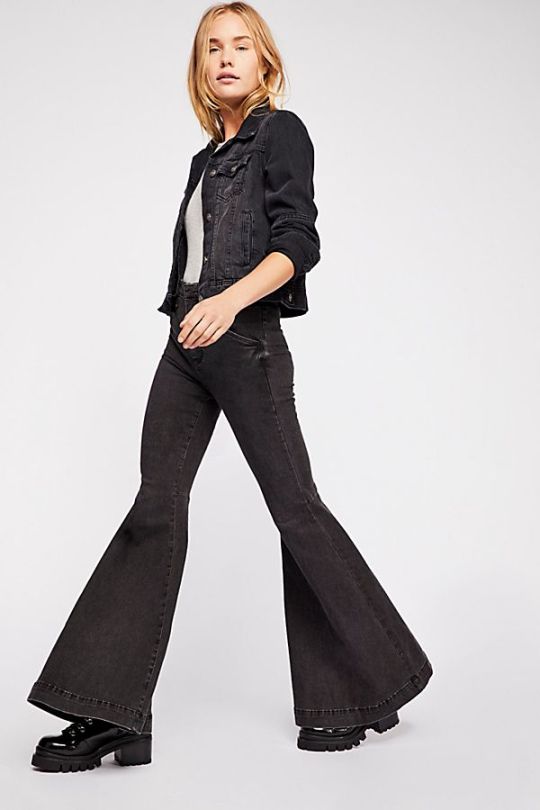
Photo Credit: https://www.freepeople.com/shop/maddox-denim-bell-bottom-jeans/
4. Bishop Sleeves: the ‘60s to now
To be completely honest, I didn't know what bishop sleeves were before reading about them. However, after learning about them, I realized I owned my own shirt with bishop sleeves. These sleeves became popular in the '60s on dresses and blouses, and later became an integral part of the hippie look. The sleeves are full at the bottom before ending in a cuff.
Then:

Photo Credit: http://sewingthe60s.blogspot.com/2013/07/60s-fashion-elements-bishop-sleeve.html
Now:

Photo Credit:
https://www.pinterest.com/pin/495396027761999714/
5. Oversized Blazer: the ‘80s to now
The ‘80s was known for big, bold and boxy clothing; this is especially true during the age of oversized blazers. Patterns were being utilized more than ever during this decade, which made a great pair with blazers. Many of these blazers had shoulder pads, which is what made them bulky. The oversized blazer I have is a plaid pattern with shoulder pads, too. This trend is one of my favorite reoccurring trends as it is also one of the newest. Nowadays, people are pairing their oversized blazers with matching shorts or a skirt worn with a cropped top or a turtle neck.
Then:
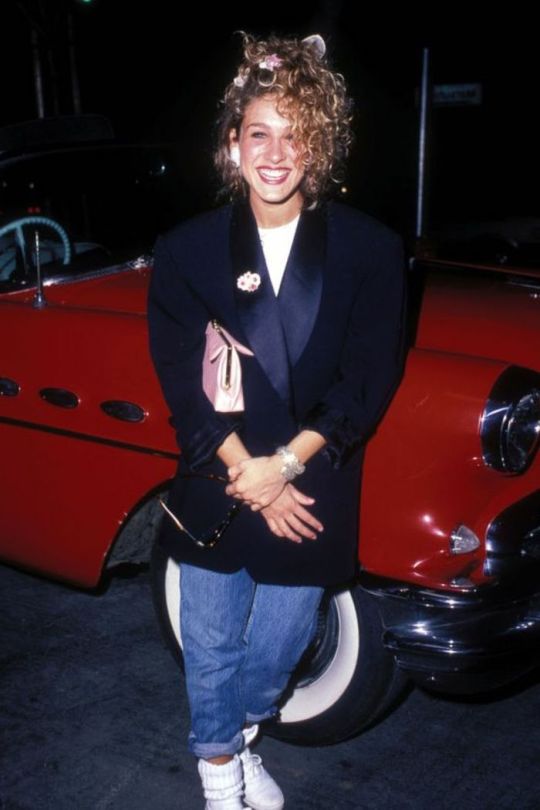
Sarah Jessica Parker sports an oversized blazer when they were first popular. Photo Credit: https://archziner.com/fashion/80s-fashion-total-disaster-or-genius-style/
Now:

Photo Credit: https://www.seenit.in/quest/show/49694
1. Dr. Martens: the ‘80s to now
What was originally made as a work boot has taken the world by storm. The trend became widespread in the ‘80s and ‘90s, but the sales declined rapidly when rock music also experienced its decline. Thankfully, the shoes made a comeback in the mid-2010s. The boots are no longer looked at as a style identity, but instead as a fashion statement. Dr. Martens is my favorite shoe brand by far as I now have four pairs.
Then:

A trio of doc marten wearing boys in 1981 during the punk era.
Photo Credit: https://www.pinterest.com/pin/121315783690297892/
Now:

Photo Credit: https://www.pinterest.com/pin/302656037456946024/
7. Go-Go Boots: the ‘70s to now
When you think of the 1970s, it is easy to think of the disco age. With this being said, the '70s is also often associated with go-go boots. Before this decade, boots were looked at as working shoes, not a stylistic choice. However, go-go boots changed the name of the game. Everyone was wearing them. They lost their popularity for a bit in the '90s and early 2000s, but in recent years have come in different styles. Now, the traditional go-go boots are made in different colors and different styles. I just recently bought my first pair of go-go inspired boots, which can be found at Urban Outfitters in both white and black. You can find my favorite pair of go-go-ish boots here. https://www.dollskill.com/public-desire-white-croc-payback-ankle-boots.html
Then:
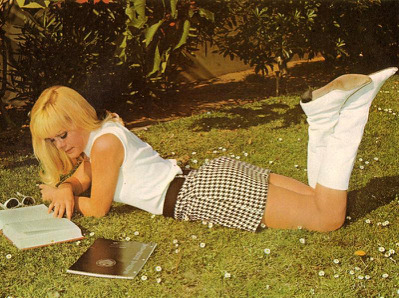
Photo Credits: https://groovyhistory.com/go-go-boots-history-1960s
Now:
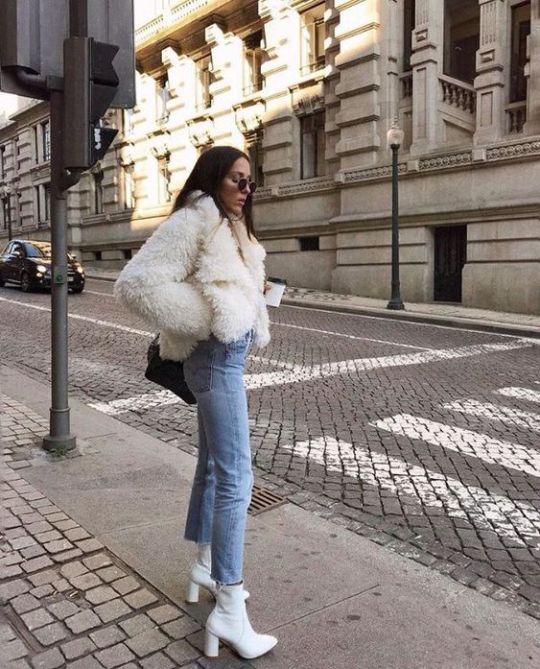
Photo Credit: https://www.pinterest.com/pin/290130400991846257/
8. Chunky Sneakers: The ‘80s to now
The trend of the chunky sneakers started as an athletic sportswear style but became a social phenomenon in the '80s and '90s. The trend went away for a few years before just recently making a market-wide reentry. Now, almost every shoe brand has hopped on the bandwagon in creating some sort of chunky shoe. The most popular, because of its affordability compared to others is the chunky Fila. The chunkier, the better. I’m not going to lie; I wasn’t a huge fan of the chunky trend at first. However, when they are properly styled, I believe they can make an outfit pop. I have one pair of chunky sneakers from Jeffrey Campbell that can be found at any retail outlet that sells Jeffrey Campbell. I bought mine from LF.
Then:

Photo Credit: https://www.google.com/search?q=platform+skechers+of+the+90s&rlz=1C5CHFA_enUS747US747&sxsrf=ALeKk00F2q1auMuyA6m1Q8IbpHTKJkSchQ:1586407913934&source=lnms&tbm=isch&sa=X&ved=2ahUKEwjH7LaBxtroAhXqhHIEHW4yAiQQ_AUoAXoECAsQAw&cshid=1586407954748273&biw=843&bih=745#imgrc=RaDGKGi0wM0q8M
Now:
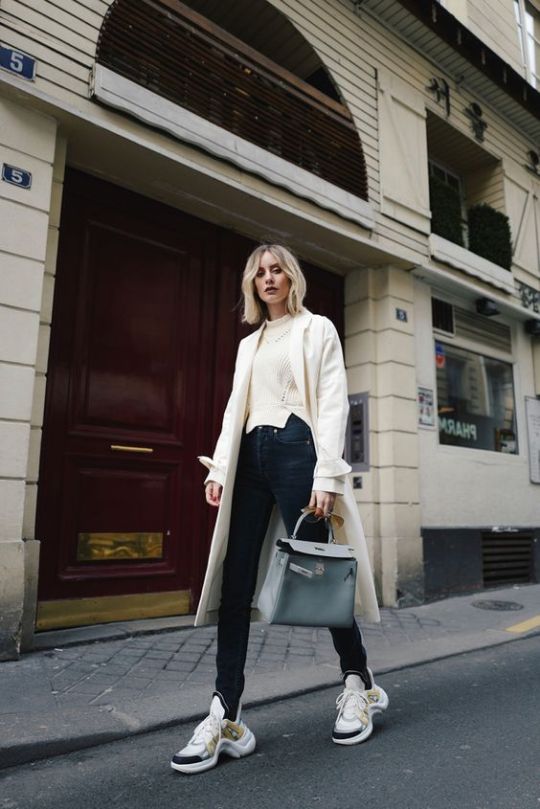
Photo Credit: https://www.pinterest.com/pin/102879172723350488/
Sources:
https://www.leaf.tv/articles/the-history-of-bell-bottoms/ https://marveloptics.com/blog/eyeglass-fashion-and-trends/another-round-for-round-glasses-making-a-bigger-comeback-with-marvel-optics/ https://www.npr.org/2019/12/16/787160693/scrunchies-are-cool-again-hairs-how-they-staged-a-comeback http://sewingthe60s.blogspot.com/2013/07/60s-fashion-elements-bishop-sleeve.html https://www.southernliving.com/fashion-beauty/80s-fashion-trends?slide=7bd103a9-7788-476f-94e8-ab3f7781abae#7bd103a9-7788-476f-94e8-ab3f7781abae https://www.grailed.com/drycleanonly/dr-martens-history https://groovyhistory.com/go-go-boots-history-1960s https://www.forbes.com/sites/forbes-personal-shopper/2019/02/26/how-to-wear-the-chunky-sneaker-trend/#7fb9f5c04936
0 notes